Describing Smells in Writing: Mastering the Art of Sensory Language
By: Author Paul Jenkins
Posted on September 6, 2023
Categories Writing , Creative Writing
The art of describing smells in writing can elevate your work to an immersive experience for readers. The human sense of smell is closely linked to memory, making it a powerful tool for writers to evoke emotions and transport readers into the world they’ve created.
Capturing the essence of a scent in words can be challenging, but with a robust vocabulary and practiced skill, it’s a technique that greatly enhances storytelling.
Understanding the science of smell allows writers to appreciate how scents can influence our perception, emotions, and memories. Developing a robust vocabulary for scents, categorizing them, and accurately describing their intensity will enable writers to paint vivid, olfactory pictures for their readers.
Through practice, observation, and dedication to mastering this art, you will be able to create stories with rich sensory experiences that leave a lasting impact on your readers.

Key Takeaways
- Describing smells effectively in writing can create deeper, immersive experiences for readers.
- Developing a strong vocabulary and understanding the science of smell helps writers enhance their storytelling.
- Practice, observation, and a focus on accurately capturing sensory details lead to richer, more evocative writing.
The Science of Smell
The role of smell receptors.
Your sense of smell relies on specialized receptors in your nose. These receptors detect and identify various types of odor molecules present in the air you breathe. When these molecules reach your smell receptors, they send signals to your brain, which then interprets the scent. There are approximately 10 main categories of scent, such as fragrant, woody, fruity, and chemical.
Sense of Smell and Emotion
Smell has a unique relationship with emotion. Unlike other senses, the olfactory system is closely linked to the brain’s limbic system, which is responsible for processing emotions and memories. This connection essentially means that smells can evoke strong emotional responses, both positive and negative. For example, the scent of freshly baked cookies may bring feelings of comfort and nostalgia, while the odor of rotten food may trigger disgust or repulsion.
Smell and Memory
One of the most impactful aspects of smell is its connection to memory. The relationship between your sense of smell and memory is powerful due to the proximity of the olfactory system to the brain’s hippocampus and amygdala, which are vital for forming and storing memories. As a result, specific scents can bring back vivid memories, even ones that have been seemingly forgotten for a long time.
When incorporating smells into your writing, consider how they might connect with emotions and memories to create a more immersive reading experience for your audience. By effectively describing a variety of scents and the emotions they evoke, you’ll be better equipped to engage your readers and help them establish a strong connection with your narrative.
A Vocabulary for Scents
Adjectives to describe smells.
The world is filled with an incredible variety of scents, and to accurately describe them in your writing, it’s essential to have a diverse vocabulary at your disposal. By using specific adjectives, you can evoke the sensations and memories associated with different smells. Here are some categories of adjectives that will help you describe various scents:
- Fresh : crisp, clean, natural
- Earthy : loamy, musty, damp
- Floral : flowery, feminine, fragrant
- Fruity : citrusy, berry-like, zesty
- Woody : pine, resinous, bark
- Masculine : musky, leathery, smoky
- Chemical : acrid, pungent, rancid
- Sweet : honeyed, sugary, syrupy
These are just a few examples to get you started. Be creative and explore the vast array of adjectives available to you when describing smells in your writing.
Describing Smells through Associations
Another effective way to describe smells in your writing is through associations. Since our sense of smell is closely tied to memory, connecting a scent to a particular experience or situation can create a vivid and relatable description for your reader. By incorporating associations, you will make your descriptions more engaging and authentic.
For example, instead of simply stating that a room smells old, you could describe the scents of dusty, yellowed pages and mothballs, evoking the feeling of a long-forgotten library. Likewise, instead of stating that a bakery smells delicious, you could describe the aroma of warm, freshly-baked bread and buttery croissants wafting through the air.
When using associations to describe scents, consider the following tips:
- Draw upon personal experiences : Reflect on your own memories and emotions that certain scents evoke, and use them to enhance your descriptions.
- Utilize common or relatable experiences : Describe smells that your readers can easily recognize, enabling them to recall similar situations they’ve encountered in their own lives.
- Be specific and detailed : Provide rich and nuanced descriptions of smells, painting a vivid sensory picture for your reader.
Remember, the aim is to create a strong and evocative connection between your description and the scent you’re trying to convey. Experiment with different associations and adjectives to find the perfect way to capture a smell in your writing.
Categories of Smells
Natural scents.
When describing smells, think about the different categories of natural scents that you might encounter in the environment. For example, the scent of flowers can range from sweet and floral such as roses, to more earthy and green as in a pine forest. Fruity smells, like those of lemons or other fruits, often have a fresh and invigorating quality. Earthy smells are common in nature and can evoke a sense of being grounded in the environment. Use these natural scents in your writing to create vivid and authentic descriptions of your settings.
- Floral : rose, jasmine, lavender
- Fruity : lemon, apple, mango
- Green : pine, grass, eucalyptus
- Earthy : damp soil, rain, moss
Man-Made Smells
Man-made smells are those that originate from human activities or created products, such as perfume or sweat. Think about the characteristics of these scents and how they can add layers to your descriptions. Chemical smells can be harsh, pungent, or even nauseating, while perfume scents often bring sophistication or luxury. Describing the smell of sweat can help to convey an atmosphere of physical exertion, labor, or stress. Incorporate these man-made smells in your writing to enhance your storytelling or underscore certain emotions.
- Chemical : bleach, gasoline, ammonia
- Perfume : floral, musky, subtle
- Sweat : salty, metallic, pungent
Complex Scents
Complex scents are a blend of various smells that are often difficult to separate into distinct components. These scents can add depth and interest to your writing, as they are not easily identifiable or may evoke different experiences for different people. When capturing complex scents, consider the layers of smells present, such as a combination of fruity and floral notes or the merging of earthy and green scents. Describing complex scents in your writing can help create a sense of atmosphere and intrigue.
- Fruity floral : a blend of fruit and flower aromas
- Earthy-green : an intermingling of soils and plants
- Lemony-chemical : a mixture of citrus and synthetic elements
Remember to use a confident, knowledgeable, clear, and neutral tone when describing the various categories of smells in your writing. By using second person point of view (you, your, yours), your readers will feel more engaged and connected to the sensory experiences you are conveying.
Describing Intensity of Smells
Light and faint scents.
When describing light and faint scents in your writing, you can draw attention to the subtle nature of the aroma. These scents might require a character to take a deep breath to fully detect them, or they may be barely noticeable. Feel free to use words like delicate , mild , or soft to convey the lightness of a scent. For example, you can describe a gentle floral aroma wafting through the air on a spring day.
Heavy and Strong Scents
Heavy and strong scents are more distinct and tend to linger in the air or on objects. To describe these scents, choose words that evoke their intensity, like robust , rich , or even heady . Your character might walk into a room and immediately notice a heavy, smoky smell hanging in the air. Additionally, you can highlight the warmth associated with certain strong scents, like a spicy or hot aroma, to further convey their potency.
Overpowering Scents
Overpowering scents can be so intense that they dominate the senses and might even cause physical discomfort. When describing these powerful aromas, words like pungent , overwhelming , and intense can effectively convey their force. For instance, your character may feel their eyes watering and nose burning due to an overpowering scent of cleaning chemicals. Pay attention to the characters’ reactions to such smells to emphasize their impact on the scene.
Tips for Describing Smells in Writing
Relating smells to other senses.
When describing smells in your writing, try to relate them to other senses, like taste or touch. By doing this, you can create additional sensory connections for your reader. For example, you could mention that a certain smell is reminiscent of a particular taste or feeling, which can make it easier for the reader to imagine and relate to the described smell. Think about how smells often have similar attributes to tastes, like sweetness or sourness, and incorporate these into your descriptions.
Using Smells to Evoke Emotions
A powerful way to use smells in writing is by connecting them to emotions. As the sense of smell is closely linked to memory and feelings, associating a specific smell with a character’s emotions can effectively convey their state of mind and create an emotional bond with the reader. Consider how certain scents might evoke feelings of happiness, nostalgia, or even fear, and use that connection to enhance the emotional depth of your writing. For example, the smell of freshly baked bread might evoke feelings of warmth and comfort, while the smell of a damp basement might evoke feelings of unease or anxiety.
Choosing the Right Words
When describing smells, it’s essential to choose the right words to convey the message clearly. Be specific and avoid using vague or overly complex language. Instead, use concrete and descriptive terms that will paint a clear picture for the reader. Some helpful ways to do this include:
- Use adjectives : Employ a variety of adjectives to describe the smell’s qualities, such as sweet, pungent, or musty.
- Analogies and metaphors : Draw comparisons between the smell and other recognizable scents, tastes, or feelings to help the reader understand the sensory experience better.
- Onomatopoeia : Use words that imitate the sound associated with an object or action, such as “sizzle” or “pop,” to help your reader connect with the sensation of the smell.
- Show, don’t tell : Rather than merely stating that a character can smell something, describe the actual scent, the effect it has on the character, and the resulting emotions.
By following these guidelines, you can effectively describe smells in your writing, engaging your reader’s senses and creating a more immersive experience.
Examples of How to Describe Smells
Using smells in character descriptions.
To create vivid characters, writers can use descriptions of scents to convey personality traits and evoke emotions in the reader. For example, you can describe a character’s personal fragrance, such as earthy, floral, or crisp. These words can help characterize them as masculine, feminine, or even androgynous.
Here are a few examples of smells used in character descriptions:
- Her scent was a delicate mixture of lavender and vanilla, making her presence soothing and comforting.
- He carried the unmistakable aroma of fresh pine, evoking feelings of being in a forest.
- Their scent was a confusing blend of citrus and cinnamon, giving them an air of mystery and unpredictability.
Setting the Scene with Scents
In addition to character descriptions, you can use smells to help set the scene or create a mood in your writing. Descriptions of scents can transport your reader to different environments, providing an immersive experience and enriching your narrative.
Here are a few examples of using smells to establish a scene:
- The sweet smell of freshly baked pastries greeted her as she entered the cozy bakery.
- A salty sea breeze filled the air, transporting her back to summer days spent at the beach.
- The pungent odor of gasoline and burning rubber filled the bustling garage, immersing the reader in the world of auto repairs.
While describing smells in your writing, remember to keep the tone confident, knowledgeable, neutral, and clear. In doing so, your descriptions will be more effective and enriching for your readers.
Common Pitfalls in Describing Smells
Overuse of adjectives.
One common pitfall in describing smells is the overuse of adjectives. While adjectives are necessary to convey the intensity or quality of a smell, too many can leave the reader overwhelmed and confused. It’s important to strike a balance and use adjectives judiciously. Try to focus on choosing a few strong, specific adjectives that accurately convey the scent you’re describing. Using too many adjectives can also make your writing appear less polished and professional.
Describing Smell without Context
Another issue writers encounter when describing smells is neglecting to provide context. Smells don’t exist in isolation; they are often tied to a specific setting or situation. To make your descriptions more effective, try to include contextual details that will help the reader imagine the scent more vividly. For example, instead of simply describing a smell as “musty,” you might indicate that the musty odor is reminiscent of a damp, old basement, which not only grounds the scent in a physical space but also allows your reader to better visualize and understand the smell.
Ignoring the Readers’ Experiences and Associations
Finally, it’s important to consider your readers’ experiences and associations when describing smells. People’s interpretations of scents can vary widely due to their personal experiences and cultural backgrounds. What smells delicious to one person might be off-putting to another. In your descriptions, try to take these differences into account by using relatable, universal examples that most readers will understand. At the same time, avoid using highly subjective or personal associations that may not resonate with everyone. By keeping the reader in mind and considering their experiences, you can create more effective, engaging descriptions of smells in your writing.
Frequently Asked Questions
How can i effectively convey scents in my writing.
To convey scents effectively in your writing, you should provide a vivid and specific description that helps the reader imagine the smell. Think about the different aspects of the scent – its intensity, its duration, and the sensations it evokes. Make connections with memories or emotions, and use sensory terms and similes to enhance the description.
What are some sensory terms used for describing various smells?
Sensory terms used for describing smells can be grouped into different categories, such as
- Floral (e.g., rose, jasmine)
- Fruity (e.g., citrus, berries)
- Earthy (e.g., damp soil, petrichor)
- Spicy (e.g., cinnamon, cloves)
- Sweet (e.g., vanilla, caramel)
- Pungent (e.g., ammonia, vinegar)
These terms help you create a more detailed and immersive experience for your reader.
What are some ways to describe a compelling fragrance?
When describing a compelling fragrance, consider:
- Its main scent (e.g., lavender, sandalwood)
- Its subtler notes (e.g., hints of lime or vanilla)
- The way it evolves over time (initial burst, heart notes, and base notes)
- The feelings it evokes (e.g., warmth, calm, energy)
Use comparisons and similes to make the description relatable and engaging.
How can I illustrate the smell of a person or an environment?
To illustrate the smell of a person or an environment, focus on the most characteristic and dominant scents associated with them. For a person, consider their perfume, body odor, or even the laundry detergent they use. For an environment, think of the combination of smells present, such as the saltiness of the sea, the vegetation, or the exhaust fumes in a city. Use sensory details and create a vivid description that transports your reader to the scene.
What phrases can be used to describe unpleasant odors?
Here are a few phrases you can use to describe unpleasant odors:
- Rancid or sour
- Musty or stale
- Overpowering or suffocating
- Acrid or sharp
- Fetid or rotten
Be creative with your language and comparisons to help your reader understand the intensity and nature of the unpleasant odor.
How can I incorporate the sense of smell into descriptions of natural surroundings?
To incorporate the sense of smell into descriptions of natural surroundings, focus on the most characteristic scents of the setting. Think about the smells associated with the place – the earthy aroma of a forest, the fresh scent of a meadow, the salty tang of the ocean, or the fragrant blossoms in a garden. Use descriptive language and draw connections with memories or emotions to enrich your depiction and engage your reader.

75 Words That Describe Smells – A Resource For Writers
Writers know that using the senses is a great way to make stories come alive. This post is about how writers could and should use words that describe smells .
Great writers use the five senses when they write. They make their stories real by allowing us to experience what their characters see, smell, hear, taste, and touch.
Using the senses is one of the best ways for writers to learn how to show and not tell.
I have written about words that describe taste , and touch , and sound in previous posts. We also have a post on words that describe colours . In this post, I am writing about words that describe smells.
About Smell
A smell is ‘the pleasant or unpleasant quality of something that you notice when you breathe in through your nose’. To smell is ‘to notice or recognise the smell of something’.
The Power Of Smell
Smell is one of the most powerful senses.
- It can transport us back in time in a moment. The sense of smell is more closely linked with memory than any of the other senses.
- It also evokes emotions. Smell is one of the most important reasons people are attracted to each other.
- It is one of our most important survival mechanisms. A bad smell warns us that we are in danger, for example, when we smell smoke or rotten food.
Writing Tip
Because of this power, writers can use the sense of smell to show a character ‘s background, or to move a plot forward.
Quite Interesting :
- You can say ‘I smelled’ or ‘I smelt’ if you are using the past tense of the verb. ‘Smelt’ is more commonly used in British spelling and ‘smelled’ is used in US spelling.
- If you lose your sense of smell you can feel isolated and cut-off from the world. The loss of the sense of smell can ‘affect one’s ability to form and maintain close personal relationships and can lead to depression’.
- Anosmia refers to the total loss of the sense of smell.
75 Words That Describe Smells
General words describing smells.
Use these words that describe smells when you are setting a scene.
- anosmic – odourless, no smell at all
- antiseptic – disinfectant smell / or no smell
- aroma – a smell that is strong but pleasant
- comforting – pleasant aroma
- delicate – subtle, faint, smell that is not overpowering
- evocative – a smell that makes you think of something, often something that you experienced in the past
- faint – a smell that is not strong
- fragrance – a sweet or pleasant odour
- heady – strongly aromatic, pungent, rich, intoxicating, spicy, piquant – not a mild smell
- heavy – a sweet and strong smell
- intoxicating – A smell that exhilarates, disorients, or excites
- laden – a literary word that describes a strong smell
- odour/odor (US spelling) – a smell
- odorous – a strong smell
- odourless – with no smell
- piquant – stinging, pungent, an aroma that tickles the nose.
- powerful – a strong smell
- redolent – smelling of something
- reek – to smell strongly and unpleasantly
- scent – a particular smell, especially a pleasant one
- whiff – a slight smell of something
Words That Describe Unpleasant Smells
- acrid – a smell that is strong, bitter, and unpleasant in your nose and throat
- damp – a wet smell
- fetid – an unpleasant smell, usually caused by decay
- frowsty – an unpleasant smell caused by a lack of fresh air
- funky – a strong and unpleasant smell
- fusty – smells old, dusty, or damp
- high – an old-fashioned word that describes a strong flavour and smell
- malodorous – scented, aromatic, redolent, fragrant, stinking.
- musty – unpleasant, stale, and not fresh
- nasty – unpleasant smell
- nauseating – a smell that causes disgust, loathing, or revulsion
- noisome – extremely unpleasant, especially because of being very dirty or having a bad smell
- overpowering – very strong smell
- pungent – a smell that is strong and sharp
- putrid – decaying and smelling very bad
- rancid – rancid food is no longer fresh and has an unpleasant smell
- rank – a strong unpleasant smell or taste
- ripe – a strong or unpleasant smell
- sickly – makes you feel sick
- smelly – an unpleasant smell
- sour – a taste or smell that is no longer fresh
- stale – not fresh or pleasant
- stench – a very bad smell, especially of decay
- stinking – an unpleasant smell
- stuffy – a smell caused by an area with no fresh air in it
Words That Describe Pleasant Smells
- ambrosial – sweet smelling, fragrant, aromatic
- aromatic – perfumed, fragrant, scented, sweet smelling, pungent, usually pleasing
- bouquet – the particular smell of a wine or flower
- delicious – a pleasant smell
- fresh – a pleasant, newly made smell that can be clean, clear, cool, crisp, refreshing, sweet, warm
- fragrant – with a pleasant smell
- perfumed – pleasant to smell because perfume has been added or used, or it has a natural perfume
- rich – a smell that is strong in a pleasant way
- savoury/savory (US Spelling) – pleasant to taste – spicy, pungent, flavoursome, and aromatic, salty but not sweet
- scented – a pleasant smell
- sweet – a pleasant smell that is sweet
- tangy – a smell or taste that is strong and bitter in a pleasant way
Words That Smell Like Something
- citrusy – characteristic of citrus fruit in scent
- coppery – smelling of copper
- earthy – smelling like earth
- fishy – smelling like fish
- floral – smelling of flowers
- flowery – a flowery smell reminds you of flowers
- fruity – smelling like fruit
- gamy – having the distinctive fragrance of game
- garlicky – smelling of garlic
- leathery – smells like leather
- lemony – smells like lemon
- medicinal – smells like medicine
- minty – smelling of mint
- musky – similar to musk in smell
- peachy – similar to a peach in colour, taste, or smell
- smoky – smelling of smoke
- woody – an earthy smell, smelling of wood
Top Tip : Find out more about our workbooks and online courses in our shop .

© Amanda Patterson
If you enjoyed this post, read:
- 106 Ways To Describe Sounds
- 20 Words Used To Describe Specific Tastes And Flavours
- 209 Words To Describe Touch
- Three Simple Ways To Show And Not Tell
- 12 Crucial Things To Remember About Setting
- Cheat Sheets for Writing Body Language
- 20 Fun Ways To Find An Idea For A Plot
- Where Should You Begin Your Memoir?
- Use These 7 Gaslighting Phrases To Make Your Antagonist More Manipulative
Sources: https://www.macmillandictionary.com/thesaurus-category/british/smelling-unpleasant https://www.macmillandictionary.com/thesaurus-category/british/pleasant-smells https://www.macmillandictionary.com/thesaurus-category/british/smelling-like-a-particular-thing https://www.macmillandictionary.com/thesaurus-category/british/describing-smells-and-lack-of-smell https://grammar.yourdictionary.com/style-and-usage/descriptive-words-for-scents.html https://world-food-and-wine.com/describing-aroma

- Description , Show Don't Tell , Writing Resource , Writing Tips from Amanda Patterson
© Writers Write 2022
Sniff This: The Ultimate Guide On How To Describe A Smell

The nose can recognise more than one trillion distinct scents.
The sense of smell is incredibly powerful. It can evoke memories and emotions, and sometimes we even use smells to describe things we can't see.
But what do we do when we want to describe a smell to someone else? How can we accurately capture the aroma of a rose or the fragrance of a newly-washed shirt in words?
Describing scents can be frustrating, I know. Which is why I’ve written this article diving into how we can describe smells effectively as well as compiled a word list of scent-related words.

What exactly is a smell?
A smell is created when molecules interact with the receptors in our nose.
These molecules can come from anything: foods, drinks, plants, flowers, pets, and even people. Once the molecules reach our nose, they interact with the receptors in our nose, which send a signal to our brain. This is what we perceive as smell.
Our sense of smell is directly connected to the brain's limbic system, which is responsible for controlling our emotions and memory. That's why certain smells can take us back to a certain time or place in an instant.
The sense of smell is often overlooked, but it is one of the most powerful ways to evoke memories and emotions.
Different types of smells
You might be tempted to say "it smells like a rose," but that's not very helpful to someone who doesn’t know what a rose smells like. Also, there are different types of rose scents— musky, floral, sweet, and the list goes on.

When you come across a smell that you can't quite put your finger on, try to identify which category it falls into. This will give you a place to start when describing it to others.
“All smells can be classified as one of 10 types of aroma.”
After years of research, scientists have concluded that 10 is the minimum number of categories that they can categorise scent into: fragrant, woody/resinous, fruity (non-citrus), chemical, minty/peppermint, sweet, popcorn, lemon, pungent and decayed.
Categorising a scent is just the tip of the iceberg. A lot more can be done to immerse your reader’s imagination.
How do you describe a smell in writing?

When describing a smell, try to think about all the different aspects of it. What does it remind you of? What sensations does it evoke?
The more specific you can be when writing, the easier it will be for your readers to visualize and understand what you are trying to communicate. Using a dictionary can help you find the precise words and meanings that accurately convey your thoughts. However, there is no one right answer to describe a smell. It's all about using your sensory words to create a vivid picture in the reader's mind.
Here are some approaches you can take when starting to think about how to describe a smell.
1. A smell is often described with adjectives
We often smell things before we see them, and smells can evoke incredibly strong memories and emotions. That's why we use adjectives to describe smells— they create a vivid picture in our minds.
Adjectives can also help us communicate our reactions to smells. For example, if you walk into a room and smell cinnamon, you might say "that's a cozy smell." If the smell is unpleasant, you might say "that room reeks!”
These adjectives are used to describe the smell's intensity, it's qualities, or how it makes you feel.
Describe any smell with Hypotenuse AI
Simply give our AI a few keywords, and watch us turn it into surprisingly great blog posts, product descriptions and marketing copy.
2. Categorizing them according to the 5 cardinal tastes

Qualities of a smell can be broken down into the five cardinal tastes: sweetness, sourness, bitterness, saltiness, and umami. You can’t exactly smell these, but you can experience the sensation of these tastes.
This is how you might describe these smells when writing:
- Sweet: sugary, saccharine, sickly
- Sour: balsamic, tart, acidic
- Bitter: earthy, roasted, powdery
- Salty: aquatic, marine, ocean
- Umami: meaty, savory
3. Diving into the nuances of scent
You could also try to describe the nuances of the scent: what are the individual notes that make up the overall aroma?
Some adjectives to describe the nuances of scent:
- Flowers: soft, delicate, powdery
- Citrus fruits: tangy, tart, acidic
- Woods: earthy, musky, deep
- Spices: warm, fragrant, inviting
4. Describing a Scent by Intensity
You can also describe a scent by its intensity: is it light and airy, or heavy and earthy?
Words to describe intense smells:
Words to describe weak smells:
5. Describing a Scent Using Feelings and Emotions

Identifying feelings and emotions that a scent gives rise to can help make your description more evocative.
This helps with whether you want your smell to have a positive or negative connotation attached to it. For example, an intense smell may be “rancid” to some (negative connotation), and just “sharp” to others (neutral connotation)
- Positive words might include "invigorating," "relaxing," and "energizing."
- Negative words might be "stinky," "musty," and "foul.”
List of words to describe pleasant scents:
List of words to describe bad smells:.
- naueseating
- overpowering
- overwhelming
- sickeningly sweet
- suffocating
Of course, scents are not only categorised into pleasant and unpleasant smells. Let’s look at words describing some common smells to see how we can stimulate your imagination.
Words to describe the smell of rain
The smell of rain right after a storm is a scent that many of us are familiar with.
Petrichor ( noun) the pleasant scent when rain falls on dry soil.
Words to describe the smell of food
Assuming you're describing food that smells good, here are some adjectives you can use.
- Mouthwatering
- Irresistible
- Scrumptious
Words to describe the smell of alcohol in writing
The use of alcohol is pervasive, from being used as a disinfectant in hospitals, to being consumed in our drinks.
Words to describe the smell of alcohol in a hospital setting:
Words to describe the smell of alcohol breath (drunkard’s breath).
Smell is one of the most evocative senses, conjuring memories and affecting moods faster than any other sense.
Whether you're describing a smell you love or trying to capture a scent for a creative project, it's important to know how to describe it in a way that accurately conveys its essence. When describing a smell, it's important to be as specific as possible, and to use adjectives that will help the reader to imagine the scent.
With these tips, you'll be able to capture any smell you encounter and make your readers feel like they can smell it too.
Try Hypotenuse AI's text generator to fully unlock the potential of your olfactory descriptions. Engage your audience and bring scents to life with enhanced writing. Get ready to captivate readers with every description.

Join 100,000+ marketers writing with Hypotenuse AI


30 of the Best Words to Describe Smell in Your Writing
By: Author Hiuyan Lam
Posted on Last updated: October 20, 2023
Categories Vocabulary Boosters

As a writer, you’re expected to have a wider vocabulary than most to paint vivid pictures in the minds of your readers; however, it can be more difficult to find accurate words to describe smell than sight, touch, sound, or taste.
You may be tempted to use the following words to describe smell- delicious/good, or bad/awful- but surely you can paint a better picture than that. We’ve compiled a list of words to describe various smells/odors to help improve your writing.
Here are 30 of the best words to describe smell:
6 words to describe delicious food
When you write about delicious food, your choice of words should make mouths water! Here are 6 words to describe smell in this context:

6 words to describe smell of awful food
Stinky foods can ruin your appetite and can even upset your stomach. Let your readers know how bad it is with these 6 words to describe smell of awful food:

You May Also Like:
25 of the Best Words for Writers to Describe Fire

E.g. “The goat smelled so raw I felt like I was lying amongst a herd.”
About the smell of a person’s perfume
People wear perfume to establish a signature scent and to help them smell good all day long. Here are 6 words to describe smell of one’s perfume.

25+ of the Best Words to Describe Taste of Food

Words for a person’s bad smell
The world would be a much better place if everyone practiced good hygiene, but unfortunately, this is not so. Here are 6 words to describe smell of these people:

25 Perfect Words to Help Describe Your Pain and Suffering

6 words to describe an actual perfume
If the perfume is not being worn by someone, there are still words you can use to describe their scents. Here are 6 words to describe smell of perfume:

When writing, you don’t have to use complicated words to describe smell. The whole point is making the reader relate to what you’ve written to create an effective scene.
Over 50% Off Writing Classes Today Only . Click Here To Visit The Store

- Short Stories
- Writing Tips
- Fantasy Writing
- Worldbuilding
- Writing Classes
- Writing Tools
- Progress Report
The Best Examples Of The 5 Senses And Descriptive Writing
Using the 5 senses in writing can deeply immerse readers in scenes and stories by creating more vivid imagery in their minds. It’s a skill that can elevate books to a higher level. But so often we writers find ourselves lured into the trap of relying on sight and sound. Relying on a narrow range of sensory language isn’t always enough to bring a story to life. We can inject so much more into our stories simply by utilizing sensory details in our writing.
In this guide, we’ll take a look at our sensory organs, why we use vivid writing that appeals to the senses, look at the 5 senses with examples of descriptive writing, and ways we can use each sense to elevate our stories to the next level.
Many people experience things through smell, touch, and taste. So appealing to the senses in our writing will enrich our tales and prose with vivid imagery, which is often used to help the reader feel immersed and engaged.
In fact, the oft-forgotten 5 senses are some of the most powerful forms of description, things that can enrich a story and give it life.
And, as we’ll see below, using a sensory description has an incredible ability to connect with us on a psychological level.
Let’s dive in.
Choose A Chapter
What are the 5 senses in the context of writing, why are the five senses important in writing, how to use the 5 senses in writing, the power of sensory description, imagery and the 5 senses, the 5 senses and descriptive writing examples, 5 senses writing checklist, examples of a descriptive paragraph using sensory details, exercises to help you use the 5 senses in writing, a list of helpful adjectives for the five senses, frequently asked questions (faq) on the 5 senses in writing.
This may seem like a straightforward question, but it’s always best to cover the basics before advancing to more technical points.
This style of prose is essentially writing that employs the five senses to create mental images for the reader.
For example, if you want to create a vivid image of a beach, you may describe the smell of seaweed or the grainy texture of sand.
In drawing upon these familiar sensations, we can open the portal wider for our readers to step into the scene, to feel what it’s like to be there.
So that’s what the 5 senses in writing are—they empower your descriptions and help draw readers into the story. Let’s look more at why using them is important.
Using your five senses in your writing is an incredibly powerful way to immerse your reader in the tale.
The more the reader can understand what it’s like to be in your character’s shoes at that precise moment, be it fleeing a demon or marching to war, knowing how it feels and smells like, as well as the visual and audio descriptions, can elevate stories to a whole new level. It quite simply makes it more enjoyable to read.
From a writing perspective, incorporating each of the five senses in your writing at appropriate moments is something your readers will love.
From the perspective of the fantasy writer specifically, using the 5 senses is a terrific way to reveal the details created during your world building process.
This is especially useful when you’re trying to convey unique imagery or something that’s altogether alien to the reader. It’s something I used a lot when writing Pariah’s Lament and readers loved it. This is just one of the many 5 senses examples you’ll find below.
If you re-read some of your favourite books there’ll no doubt be passages where the writer employs a sight and smell or taste or touch to great descriptive effect. Oftentimes they employ simple but effective techniques (which we’ll cover below) that draw you deeper into the scene, so much so that you feel as if you’re there.
Often some of our favourite books are those that use to great affect the five senses. Books that transport us to new worlds and take us on epic adventures. And so often it’s the vivid descriptions that draw us in and help us walk amongst the characters.
We’ll look at some examples of the 5 senses in writing below that illustrate just how effective they can be further on below. But first, let’s look at why this is all so important.
Achieving Vivid Writing That Appeals To The Senses
If you want to learn how to achieve vivid writing that appeals to the senses, here are some quick tips:
- Practise – it sounds simple but one of the best ways to get used to including the 5 senses in your writing is to practise. Below, you can find lots of handy exercises that can help you sharpen your writing skills.
- Reading – another very effective method of sharpening your usage of the five senses in your writing is to simply read the works of top-class authors. These talented writers can use small details that appeal to the senses and immerse you in the story.
- Explore – to boost your vocabulary when describing scenes, characters and feelings with the senses, it helps to go out and explore the world and absorb what it is you’re trying to convey. For example, if you need to describe the feeling of the bark of a tree, going out and examining and touching the different trees around you can help you come up with ideas for describing textures, smells and unique visual descriptions. A
The 5 Senses And Writing About Feelings And Emotions
It’s difficult to describe how a character feels. People are complex beings and at the best of times, we can’t make sense of how we think and feel about a given thing.
When writing, using the 5 senses can open up doors into the minds of our characters. In utilising them, we can avoid simply telling the reader what our character is feeling, (like, “he felt sad”) and instead, we can suggest or show it through the likes of body language, like how their shoulders are (sagging or raised).
Here are some more examples of the 5 senses when describing emotion:
- Sight – If, for example, your character is feeling a little down, you could focus on describing the way they interpret the world around them, such as focusing on the grey clouds hanging low in the sky, the wilted flowers in the garden, or the empty chair across the room.
- Sound – Incorporating sounds can help to create an atmosphere that resonates with your readers. Let’s say your character is feeling anxious. You could describe the ticking clock, the distant sirens, the creaking floorboards—things that increase the tension.
- Touch – A powerful method is to use tactile descriptions to help your readers feel what the character is feeling. For example, if your character is feeling nervous, you can describe their clammy hands, the beat of their heart in their ears, the tightness in their chest.
- Taste – Using taste really adds depth to your descriptions of emotion. If your character is feeling joyful, you could describe the sweetness of a ripe strawberry, the richness of a dark chocolate truffle, or the effervescence of champagne bubbles. Linking these things back to memories can also help to trigger a more powerful reaction. For instance, the taste of a an Indian curry that you had the night you proposed to your wife.
- Smell – Scent can also help to create a visceral experience for your readers, one that relates to them on a more emotional level. If your character is feeling nostalgic, you can describe the aroma of freshly baked cookies, the salty sea air, or the musky scent of old books.
By using the five senses in your writing you can create a multi-dimensional experience for your readers, making your characters and their emotions more real and relatable. Let’s take a look at just how powerful sensory details are when it comes to painting a picture in the reader’s mind.
We’ve covered a lot about using sensory descriptions and how they can elevate your writing to the next level. However, there are a lot of scientific studies that back up the theory.
For instance, in a study published back in 2011 by The Quarterly Journal of Experimental Psychology, it was found that we process certain words faster than others if there is a sensory experience attached to them.
Such studies aren’t new. In fact, Miller and Johnson-Laird (1976) examined how fundamental “word-percept associations” are to our language. This was expanded upon n a 2003 study by Rakova who emphasised a very important point—that the purpose of language is to express how we feel, what we see, hear, smell and taste.
Another study on sensory linguistics (which looks at how language relates to the senses), published by the University of Birmingham , examined humanity’s dependence on perceptions and how we interact with the world through feeling, seeing, tasting, hearing and smelling.
What we can see here is a growing understanding of the power and influence of a piece of sensory description. By examining these studies, writers can find a whole new appreciation for using the 5 senses in writing.
What Are The Five Sensory Organs?
Before we dive into looking at the 5 senses in a writing context, let’s look at what the five sensory organs are:
- Special receptors in the skin that enable us to touch and feel
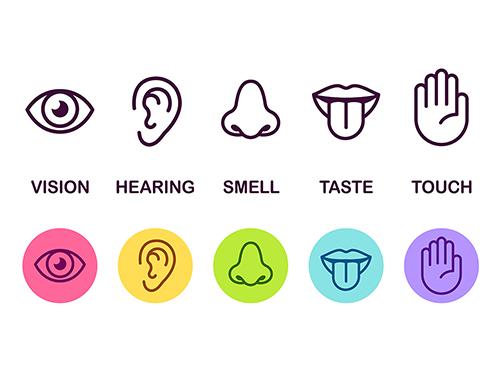
Combined, our five senses enable us to learn, experience and create memories. Pepsi Max, for example, always reminds me of my history lessons in college—I’d drink a can during every lesson. Think of songs too. They have an incredible ability to transport us back to moments in our past. Let’s explore things in more detail.
If you’d like to learn more about the basics surrounding the 5 senses, see more examples, or learn how to incorporate sensory description in your writing, see this quick video.
Are There More Than 5 Senses?
Now, something you may be wondering about is whether or not there are more than the 5 classic senses. It is, in fact, believed that there is more than touch, taste, sound, sight, smell. These golden 5 were defined by Aristotle because he could relate them to sensory organs. They are sometimes known as the “five senses folk model”.
But it depends on the manner in which you define a sense.
Newer approaches look at the number of sensory organs we have. And many academics now counter the sixth sense as the vestibular system . This relates to the inner ear and the impact it has on our balance and vision.
But other academics have gone further than this. Some tweak the definition to include sensory receptors. Now the skin, for instance, has at least four sensory receptors, relating to pain, temperature, touch and body awareness (otherwise known as proprioception).
So when someone asks how many senses do we have, it’s all a matter of definition. You can check out this awesome video below by SciShow which explains things in more detail.
Perhaps the main one of the five senses, sight often receives information first and therefore forms our initial judgements.
When it comes to using sight in writing, our stories and characters are often guided by this prime form of description. We describe what our characters see.
However, it would be nigh impossible to describe every aspect of a scene, and even if you did achieve it, nigh impossible to read.
Some of the most acclaimed writers, Charles Dickens, in particular, approached it by picking the right details. The little things that tell us everything. Let’s look at an example of the sense of sight in writing from Great Expectations :
“There was a bookcase in the room; I saw, from the backs of the books, that they were about evidence, criminal law, criminal biography, trials, acts of parliament, and such things. The furniture was all very solid and good, like his watch-chain. It had an official look, however, and there was nothing merely ornamental to be seen. In a corner, was a little table of papers with a shaded lamp: so he seemed to bring the office home with him in that respect too, and to wheel it out of an evening and fall to work.”
This is Jagger’s office. Though he doesn’t feature, we’ve gleaned much about who he is from details like the types of books upon the shelves and the paper-filled table, suggesting he lives a busy, professional life.
Colour is another fantastic tool when it comes to sight. Dickens was known for using colours to portray emotions or themes, such as red for frustration or anger, black for death, white for purity or goodness. Using colour, particularly with themes and the premise , can add extra layers to a story.
We explore some more 5 senses examples below to give you some ideas when it comes to sight.
Writing Prompt
Stand in the middle of your bedroom. Look all around you. Make notes of every little detail you see. Colours, shapes. Crumbs or dust on the floor. The more attentive you can be the better.
Pick out things that could relate to characterisation. The books on a shelf perhaps—what kind of books are they? Are there empty glasses beside your bed, dishes too? All of this helps to build interesting imagery, as well as contribute to other elements of the story, in this instance, characterization .
Sound is incredibly important when it comes to using the 5 senses in our writing. Dialogue dominates many stories, but so often little attention is paid to how characters sound when they talk. It’s strange when you think about how unique people sound, and a person’s voice makes such a difference to how we form views of them.
Something I learned not so long ago is that ducks don’t quack. They tend to grunt or even cackle. It’s easy to assume how things sound, but sometimes what we assume is wrong.
It’s always worth taking the time to research. In doing so you may find new and original ways to describe the sound. Using metaphors and similes, particularly if the sound is unusual, is a great way to bring clarity to descriptions.
Another often overlooked thing is silence. Silence is an excellent tool to set the tone or build an atmosphere or tension . A noiseless forest. A still, foggy street. Eerie.
Either using yourself or ideally, your character, place yourself in a location in which things are happening around you—a park, for instance. Close your eyes and listen.
Make a note of every little sound you hear, from tweeting birds to jackhammers digging up roads. If you can, make a note of how different sounds make you feel. Do fireworks startle you, for instance? Then think about why they could startle you or your character.
Of all the five senses, touch is, in my view, one of the most powerful yet underrated ones. If you can convey touch in an effective way, you’ll reap the rewards.
The scope of this sense depends on the nature of the scene, but imagine, for example, walking barefoot through a forest. The softness of moss between your toes, the cool slime of mud, the pokes and scratches of sticks and stones. Such details can draw readers deeper into the story.
We’ll look at some sensory writing exercises below, but as a brief writing prompt now, close your eyes and pick something up. Describe how that object feels. What features does it have? The texture? Sturdiness? Width? Weight?
These little details can make all the difference when it comes to incorporating the 5 senses in your writing.
Taste is the more neglected one out of the five sensory organs when it comes to writing. Just like all of the senses, using taste can enrich your story immensely.
How many times have you said the phrase, “It tastes like …”. So many of our memories are tied to tastes. Like I said before, Pepsi Max always reminds me of history classes in college. Which tastes trigger memories for you?
If this happens to us, it happens to your characters too. It’s a great thing to include within your characterization process.
Like smell, taste can serve as a trigger for memories. For example, a husband who shared a love for apple turnovers baked by his deceased wife is reminded of her whenever he eats one.
Taste can also trigger emotions. There’ve been times when I’ve eaten food that tasted so good I bounced with glee in my chair.
A fun one. Head down to your kitchen and finding something to eat that has a bit of texture. Close your eyes, take a bite. Focus closely as you chew, as the food rolls around your mouth, over your tongue and down your throat. How does it taste? How does it make you feel?
We, at last, arrive at smell, though its place is no reflection on its importance when it comes to using the 5 senses in our writing.
The power of smells cannot be underestimated. We smell things all of the time and those scents help to shape our impressions. What can you whiff right now?
A smell helps us to form a judgement on things, such as whether something’s okay to eat. And crucially, smells can trigger vivid memories and emotions, vital tools to any writer.
Here’s one of my favorite 5 senses examples for using smell in writing from James Joyce’s Ulysses :
“ Mr Leopold Bloom ate with relish the inner organs of beasts and fowls. He liked thick giblet soup, nutty gizzards, a stuffed roast heart, liverslices fried with crustcrumbs, fried hencods’ roes. Most of all he liked grilled mutton kidneys which gave to his palate a fine tang of faintly scented urine.”
How do you describe the smell of rain in creative writing?
The technical term for the smell of rain is “petrichor”.
Rain brings with it a freshness, a crispness, an earthiness. It awakens the scents of other things like dry soil, flowers and grass. It’s something I turn to a lot when writing fantasy , especially in those scenes where characters are moving through rich, rural landscapes.
Similar to the task above which involves a trip out to a busy place, like a park, sit down and have a good sniff. Another good place to try is a coffee shop. Lots of smells of roasting coffee and baking cakes in there.
Importantly, think about where those smells lead you in your mind. Do they trigger memories? Do associated words pop into your mind? From your character’s perspective, this is what their experience would be like too.
The main aim of using the 5 senses is to create imagery in the minds of readers. That is the ultimate aim of writing fiction—to transfer the thoughts and ideas from the writer to the reader.
It’s arguably the most magical thing about writing, the ability for an author to connect with a reader thousands of miles away or hundreds of years into the future.
So it’s up to the writer to create vivid imagery and the 5 senses is one way of achieving that.
There are actually specific terms for the types of imagery that each sensory organ can conjure. Here they are:
- Visual Imagery – this, of course, relates to sight
- Olfactory Imagery – this fancy word relates to smell
- Auditory Imagery – you may have guessed, this one relates to the description of sounds
- Gustatory Imagery – this one’s all about taste
- Tactile Imagery – and this final one is all about touch, an often-forgotten sense
5 senses imagery, in short, is a powerful tool in a writer’s arsenal. Let’s look at some examples of how it’s used in practice.
Let’s move on to look at the 5 senses and descriptive writing examples. As we’ve seen above, vivid imagery is often used to help the reader feel immersed in the story. So in this section, I’ve provided some from some bestselling books that make great use of the 5 senses.
“The tearing of flesh, as though a butcher were yanking meat from a flank. The bubbling of liquids and the soft rasping of the cutting tools.” Tooth & Nail , Ian Rankin
“Stars spun across his vision and his head felt as if it were about to burst… With difficulty, Hanno undid the chinstrap and eased off his helmet. Cool air ruffled his sweat-soaked hair.” Hannibal: Fields of Blood Ben Kane
“A cold wind was blowing out of the north, and it made the trees rustle like living things. All day, Will had felt as though something were watching him, something cold and implacable that loved him not.” A Game of Thrones, George RR Martin
“It was dark and dim all day. From the sunless dawn until evening the heavy shadow had deepened, and all hearts in the City were oppressed. Far above a great cloud streamed slowly westward from the Black Land, devouring light, borne upon a wind of war; but below the air was still and breathless, as if all the Value of Anduin waited for the onset of a ruinous storm.” The Return Of The King , JRR Tolkien.
This last one for me is a great example of a descriptive paragraph using the five senses. From the off, you not only get a vivid image of the setting (dark, dim, sunless dawn), but you can feel what it’s like to be there on an emotional level (hearts in the City were oppressed). Our senses are further teased with the description of a “still and breathless” air.
If you’d like to find more sensory description examples, I recommend doing this simple exercise:
Pick up any book that you see, one ideally that you don’t mind marking with a pen or highlighter. Next, scan the pages, looking for descriptive scenes. Whenever you see a sentence that refers to any of the five senses, highlight it in some way.
The benefit of doing this is that you get examples from a variety of different writers, each with their own clever way of making their exposition more immersive.
Something you may notice is that many of them employ metaphors and similes to help you build a visual image in your mind. This is a very effective way of using the 5 senses in writing. You could say things like:
- The water smashed into the ground like the tide hitting a rocky coast
- A squeal filled the air like a pig fearing slaughter
- It smelled like an overflowing latrine pit sat in the baking sun
You can learn more about using metaphors and similes in this guide on writing prose.
More Examples Of Descriptive Writing Using The 5 Senses
If you’re looking for more 5 senses examples for your writing, one of the best things you can do is to read books that pay particular attention to this. One of the standout books that explore this is Blindness by José Saramago.
There’s no shortage of sensory language examples out there for you to study. From books to writing guides like this, there are plenty of helpful resources you can learn from.
Something I’ve done to improve my use of the 5 senses in my writing is to include them within the planning process. It’s good to save it until the end when you’ve plotted out your story or chapter, however.
What I do is read over the plan and try and place myself in the scenes. Working my way through each sense, I list everything that pops into my head.
- It’ll be unlikely that you need to spend too much time on sight , but taking the time to consider things in detail can provoke new and unique ideas. What little details can be included? Remember the power of specificity.
- Next, onto sounds . Like sights, it’s unlikely you’ll need to spend too much time on this but it’s always helpful to consider the likes of characters’ voices and any usual sounds that could be featured.
- Smells . When it comes to smells a good starting point is to list everything that comes to mind, even mere whiffs, which can be the most telling of all. Smells can provoke memories and emotions too, like the smell of perfume could remind a character of their dead lover, and that leaves you open to describe emotions.
- What can your character touch or feel? How does the hilt of the sword feel in your character’s fingers? How does the touch of a vivacious woman feel to your lonely character? What information can be gleaned from the manner of a handshake?
- Lastly, what tastes , if any, can you include? Is your character eating? Can they taste blood after being punched in the cheek? Do they enter a room where the smell is so foetid they can taste it?
I wanted to provide you with a few examples of descriptive paragraphs that use sensory details. Examine how they elevate the scene by drawing you deeper. Each little detail paints a more vivid picture, such that you can almost feel yourself there, experiencing it yourself. This is a real skill when it comes to creative writing, but it’s definitely one you can learn and master.
Let’s look at our first 5 senses paragraph example:
The mud of the road sucked at her tattered leather boots, a quagmire after incessant rains. Autumn circled like a hawk. The wind grabbed at her woollen green cloak and homespun dress. The hand-me-downs from her cousins never fitted, always too wide at the waist and short of length. She pulled her cloak tight about her, bundling it around her hands to keep away the biting chill.
The ringing gave way to those crashes and bangs, each one coming with the beat of his heart. His eyes flickered open. Slate-grey clouds hung above. Dust hovered in the air, rocks and debris showered down upon him. He raised his throbbing head and looked around. Men and women, hands over their ears, cowered down behind the crenellations of the wall, fear etched upon their faces, consuming their eyes, paralyzing their bodies. A few defiant individuals continued to loose arrows. For many, it was the last they shot. The Karraban thunder smashed the parapets to bits, obliterated siege engines, battered the cliff behind them and knocked from it great chunks of rock that tumbled down to crush those below. The ringing in Jem’s ears eased enough for him to hear the screams. They became the backdrop to the rumbling of the Karraban thunder. Only one thought entered Jem’s mind: flee.
The bells rang loud and panicked across Yurrisa. Hidden in the shadows of the abandoned warehouse, Edvar and the others lay in wait. He peered through a crack in a boarded window at the cobbled street. Echoing along it came a shout. Another. Steps rushed toward him, and into view burst a group of soldiers, breaths billowing mist in the cold morning air.
Laughter rippled from the table behind Edvar. The three men were tanners, the least difficult of all working men to identify: stained clothes and hands and stinking of a peculiar cocktail of rotten flesh and mint. They rubbed themselves with the latter to mask the stench of the former. Nobody could bear their presence long enough to tell them it didn’t work.
As you can see, these examples use each of the five senses to great effect. If you’re curious where these came from, I pinched them from Pariah’s Lament .
Here are a few useful exercises to get into the swing of using the senses. The more you practice, the more it’ll become ingrained in the way you write and that’s why it’s one of my favorite writing tips of all!
- One place, one sense . As the title suggests, think of a place and describe everything you can using just one sense. Challenge yourself. Pick a sense you feel you struggle with. Or do one sense, then a different one.
- Close your eyes and pick something up. This one was mentioned above, but it’s a powerful tool. Jot down everything you can think of.
- Pick your favourite food and eat! This one’s a bit more fun. Take chocolate for example. Savour each bite and write down everything, from taste to texture, the sounds of it breaking in your mouth, and importantly, how it makes you feel.
- Pick something alien and try to use sensory descriptions. This is a great way to challenge your use of the 5 senses because you have to create everything from scratch and to a whole new level of detail. So if you’re a sci-fi writer, this could be a great way to learn how to describe a spaceship in writing.
Here’s a brilliant visual exercise too which I highly recommend trying. It’s quick, and easy and really does hone your skills when it comes to using the 5 senses in writing.
1. Walk And Write
This exercise I call walk and write . Take a notepad and write five headings: sight, sound, touch, taste, and smell. The next time you go out, even if it’s just to the shop on the corner, write down everything you experience. The touch of the rain or breeze, how the pavement feels underfoot, snippets of passing conversation you hear, the whistle of birds, how that warm and crispy sausage roll tastes. *Warning* You may look odd stopping all the time.
Here’s a step-by-step guide:
- Take a walk outside and observe your surroundings. Use your senses to take note of what you see, hear, smell, taste, and touch. Write down your observations.
- Choose one of the things you noticed on your walk and use it as a prompt for your writing. For example, if you noticed the sound of birds chirping, write a descriptive paragraph that captures that sound.
- As you write, be sure to use sensory language to bring your description to life. Instead of simply saying “I heard birds chirping,” try something like “The melody of birdsong filled my ears, each chirp a delicate note in a symphony of nature.”
- Repeat this exercise for each of the senses. Choose a different observation each time and challenge yourself to use vivid sensory details to paint a picture with your words.
2. Write A Short Story With The 5 Senses
One of the most effective ways that you can sharpen your sensory description writing is to write a short story with the 5 senses.
The way it works is simple. Plan out your story—characters, plotting, theme—and then when it comes to the writing, you’re only permitted to use the five senses.
It can help to think of a story in which you’d likely use the sensory organs more than usual. Let’s look at a few writing prompts:
- Your protagonist awakens in a dark cave. It’s cold and damp. They must figure out what’s happened and find their way out.
- Your protagonist is fleeing through a forest. What are they running from? What awaits them up ahead?
- Your character is upon a ship and is knocked overboard. How do they survive in the turbulent waves?
These are just a few prompts that are specifically designed to help you use the five senses in your writing. Trust me, an exercise like this will have your skillset sharpened in no time.
3. Use 5 Senses Writing Prompts
Here are some 5 senses writing prompts that may help you get started:
- You’re at home, watching TV. You catch the scent of something. Something that makes you mute the TV, look around, stand up. What is it you smell?
- For three days you’ve been travelling alone through the woods. You’re two days from your destination. Tired, weary. And you’re pretty sure something is following you. The sun has long since set. The embers are dying in your fire. And you begin to hear sounds close by…
- You’ve just started a new job. The office is big, labyrinthine. On your way back from lunch on your first day, you get lost. You open a door with stairs leading down. You follow them. Get further lost. And the steps give way. You awake in darkness to the sound of something growling. You reach for your phone, turn on the torch…
There are a few examples of sensory language-based writing prompts for you. See where they take you.
You can never have enough adjectives to help you describe the five senses. Below, you can find a pretty simple list, but it serves as a great starting point. From there you can add some of your own examples of using the 5 senses in descriptive writing. I also have some other helpful writing tools here that you may find useful.
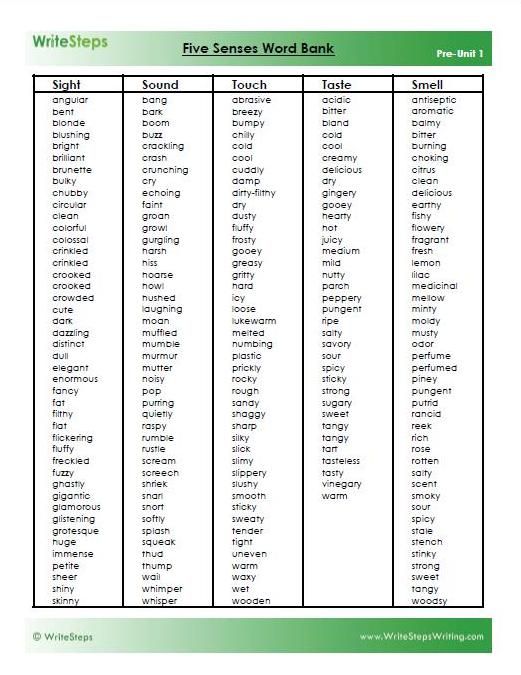
Below, you can find answers to some commonly asked questions when it comes to sensory descriptions, as well as more descriptive writing examples using the 5 senses.
“The icy wind rattled the ancient shutters upon the windows, stirring a shudder and setting every hair on her body on edge.”
This sentence uses sensory language to describe not just how the setting looks (from the rattling ancient shutters we see it’s an old possibly abandoned house), and crucially, we get a sense of how it feels to be in that setting, which is the main objective. It feels eerie, we feel the cold. We’re spooked.
Sensory description in fiction writing requires a writer to utilise the 5 senses – sight, sound, touch, taste and smell.
Incorporating the senses into your writing is simple. First, focus on what your characters can see in the scene. Then, one by one, think about what they can hear, smell, feel and taste. Assort your various descriptions and pick out your most powerful few.
The five senses are often used to draw a reader deeper into the scene, to feel closer to the characters. Writers do this by adding extra details focusing on the likes of touch and smell. This vivid writing that appeals to the senses can help immerse readers in our tales.
The best way is to pick up your favourite book and highlight any sentences or paragraphs that utilise the 5 senses. You’ll then have a bank of sensory details examples to call upon whenever you need them.
A sensory description is one that includes sight, sound, touch, smell and taste. Exploring sensory language examples gives you a greater ability to immerse your readers in the story and experience what the characters feel.
If you have any questions or need more examples of the 5 senses in writing, please contact me.
- Recent Posts
- How To Create A Theme For A Story - June 13, 2024
- A Guide To Siege Warfare And Tactics - June 12, 2024
- 15 Amazing Words To Describe The Moon, With Definitions And Example Sentences - May 22, 2024
richiebilling
About author, related posts, how to create a theme for a story, 15 amazing words to describe the moon, with definitions and example sentences, mastering dialogue: the very best tips, 31 comments.
- Pingback: A guide to writing fight scenes – Richie Billing
- Pingback: 7 tips to help with editing – Richie Billing
When writing about the senses, authors should be careful to avoid FILTER words (saw, heard, felt, smelled, tasted) that detract from the scene. Don’t say, “I saw the sparkling water.” Instead, make it more vivid. Leave out “saw.” We know you saw it because you are describing it to us. Tell us instead more of WHAT you are seeing. “The sparkling water bubbled as a creature from below made its way to the surface.” Same goes with using “heard,” “felt,” “smelled,” and “tasted.” Omit those words and describe those senses so people can experience what the character is experience.
Terrific points! Thanks for taking the time to share!
- Pingback: Prose: Writing with the Senses - Celthric
- Pingback: A Guide To Writing Fight Scenes – Richie Billing
- Pingback: Getting To Grips With Passive Voice – Richie Billing
- Pingback: What Is Passive Voice? – Richie Billing
- Pingback: How Many Fantasy Subgenres Are There? - Richie Billing
- Pingback: 5 Mistakes Men Make Writing Women Characters - Richie Billing
- Pingback: The Magic Of Books | Celebrating World Book Day - Richie Billing
Thanks for sharing!
- Pingback: A Guide To Character Development In Writing | Richie Billing
- Pingback: Character Development - Writing Compelling Characters | Richie Billing
- Pingback: How To Write Dialogue | Richie Billing
- Pingback: A Guide To Siege Warfare - Richie Billing
- Pingback: What Is Prose Writing? [With Examples] - Richie Billing
- Pingback: Easy Tools Writers Can Use To Build Suspense - Richie Billing
- Pingback: Religion in Fantasy - Richie Billing
- Pingback: The Medieval Lord - The Complete Guide - Richie Billing
- Pingback: What Is Foreshadowing In A Story? [Definition and Examples] - Richie Billing
- Pingback: 493Ways to Describe Taste to Inspire Great Writing - Writing a great book
- Pingback: Details: AKA mastering the basics – Susanne Thomas
Thanks for the link!
- Pingback: 493 Ways to Describe Taste to Inspire Great Writing - Writing a great book
- Pingback: The Best Show Don't Tell Writing Examples - Richie Billing
- Pingback: How To Edit A Novel - Richie Billing
- Pingback: What Is Flash Fiction? - Em Dash Press
This was very helpful in as a source.
Read my debut fantasy novel, Pariah’s Lament
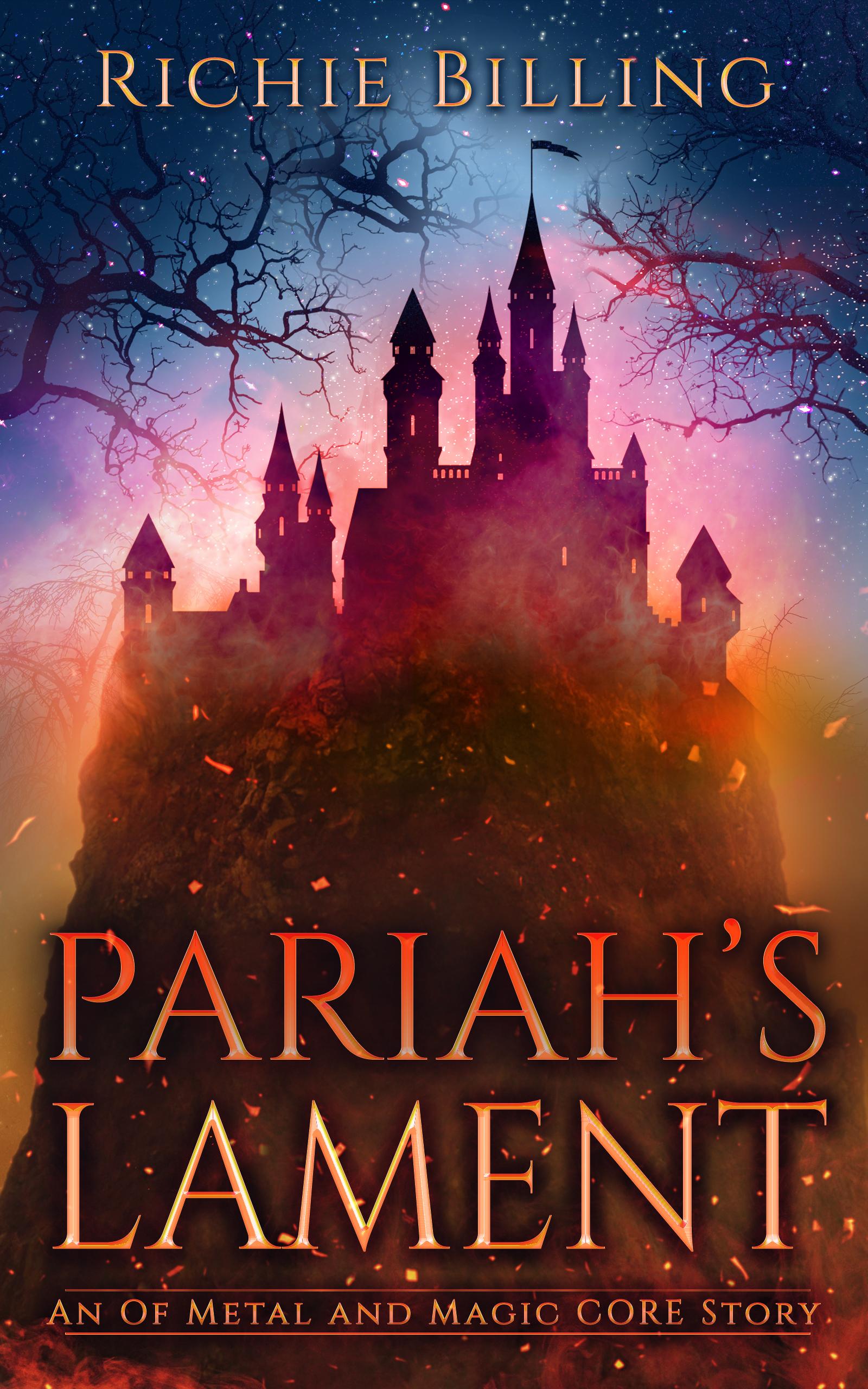
Sign Up For Free Stories!
Email address
Read my guide to writing fantasy, A Fantasy Writers’ Handbook
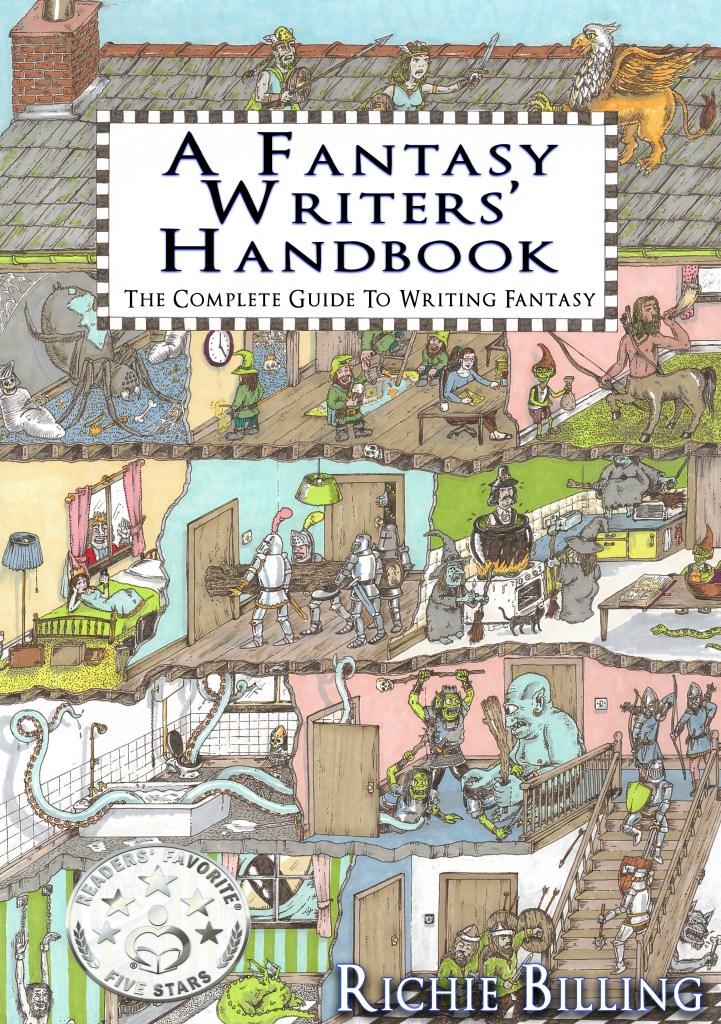
A Guide To Siege Warfare And Tactics
Quick links.
- Get In Touch
- Reviews And Testimonials
- Editorial Policy
- Terms Of Service
- Privacy Policy
- Cookies Policy
- Equality, Diversity And Inclusivity (EDI) Policy
- Affiliate Marketing Policy
- Payment Information

Follow On Social Media

Forgot your password?
Lost your password? Please enter your email address. You will receive mail with link to set new password.
Back to login

No thanks, close this box
- Skip to primary navigation
- Skip to main content
- Skip to footer
Enchanting Marketing
Writing advice for small business
How to Write Evocatively & Pull Readers Into Your Story: 3 Nose-Tickling Examples
by Henneke | 36 enchanting opinions, add yours? :)
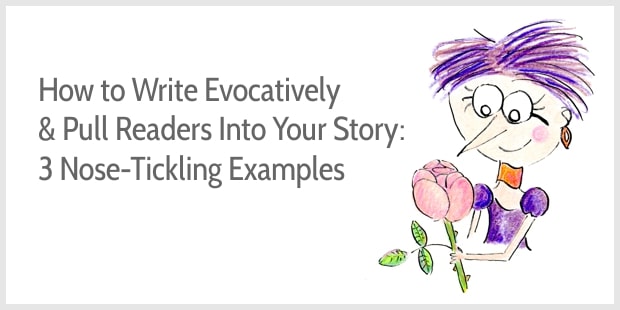
It happened to me recently.
I was reading the book Revelations in Air by Jude Stewart.
As I’m reading, I feel like I’m standing next to her smelling the orange she’s peeling. I notice a whiff of lavender as she dabs the scented oil on her wrist. Oh, and the smell of freshly-cut grass!
How can she describe smells so fabulously?
I quickly let go of my envy and begin to study her writing: What makes Stewart’s descriptions so evocative? What can I learn from her?
Describing aromas may seem like a niche writing technique but the lessons apply to almost any writing, fiction or non-fiction.
Shall we look at some examples first?
Example 1: The aromas of peanut butter
Here’s how Stewart describes peanut butter:
It’s rich, smoky, surprisingly deep. The scent stacks in clear layers: at the top floats a note of honeyed sweetness. A heavy swirl of oil forms the grounding base note. In the fat middle, it’s all sticky, particulate peanuts: a smell that matches the taste with uncanny fidelity.
When I read this description, I think: Yes, I know the fat middle with the peanutty smell. I also know the oily base note. But the sweetness? I’m not sure.
I grab a pot of peanut butter and sniff. At first, I only smell peanuts and oil. Then I let the smell come to my nose more quietly, and there it is: Sweetness.
To describe a smell more accurately, you first have to sniff more attentively. You have to stop and pay attention. That’s how you can detect the different layers of a smell—honeyed sweetness, oily base, and sticky peanuts.
Example 2: The smell of petrichor
Petrichor is the smell of rain after a long period of dry weather. Stewart starts her description like this:
Petrichor, the smell of parched earth after rain, is immersive, roomy enough to move around in. Its bright mineral tang is edged with vegetal green. There’s a hint of sourness, haloed by fresh water droplets. Petrichor lifts the ground, with all its smells, closer to the nose. It’s as if the earth has exhaled. Because this smell emanates from millions of pinpoints at once, petrichor has a stereoscopic quality. Inside the smell, each moment seems to dilate and slow. It fills the air with relief.
Describing a smell can be tricky. In his book An Immense World , Ed Yong suggests the English language has only 3 dedicated words for smells : “stinky, fragrant, and musty.” So, we borrow words from other senses, use metaphors, or name the source of a smell (e.g., rose). In the above description of petrichor, the phrases mineral tang and sourness describe tastes as much as (or probably more than) smell.
Stewart turns her description of petrichor into a 3-dimensional experience: It’s immersive and roomy enough to move around in. It’s as if the earth has exhaled (such a lovely example of personification !). The air is filled with relief.
Isn’t that lovely?
Example 3: The scent of roses
How would you describe the scent of roses?
Perhaps: Flowery, a tad sweet. The roses in our garden are still in bud, so no chance to sniff their scent for a more accurate description. I’m inclined to suggest that roses smell like … eh … roses, yeah?
Here’s how Stewart starts her description of the scent of roses:
At first the smell of roses fills the nose in a giddy rush, sweet and headlong. The burst of luxury feels total. But that rush rapidly settles down and shades into a regal stillness. You become aware of joining a vast throng of admirers in a shared contemplation. The scent’s wildness doesn’t stay wild for long in the nose; inevitably, one recalls one’s grandmother in her church best. Yet behind its rounded, classical quality, the scent still emanates some heat, prickly and pollen-like. It evokes late summer, lazily crawling insects, the finery of silken petals rotting under a bush, the sprawl of untidy nature. Inside the smell of roses one senses the momentary quality of life, how rapidly loveliness blossoms and fades, the nearness of beauty to rot.
Stewart relates how she experiences the scent in two stages: The giddy rush that settles down into a regal stillness. Next, she describes the memories the scents evoke: Grandmother, late summer, crawling insects. And lastly, there’s a philosophical note on the fading of beauty and the momentary quality of life.
Smells can ground you into the present. Forget all your worries. Forget all your stress. Instead savor the smells in the air around you, here and now. I love this when I’m cooking. I love how the smells evolve and intermingle. It’s a full-body experience. As Stewart writes, olfactory receptors not only “line our noses but also our skin, skeletal muscles, and major organs.” We smell with our entire bodies.
But aromas aren’t just about the present. They can also evoke strong memories and transport us back to the past. As Stewart suggests, smell is a form of “emotional time travel:”
(…) important memories in your life are nearly always emotional. When an important episodic memory forms, we’re feeling all the feels, registering all the details clearly. If we happen to smell something distinctive during that experience, the amygdala, hippocampus, and olfactory bulbs fuse feelings, memory, and smell together effortlessly.
To describe a smell, you can choose to stay in the present or you can go back in time. Like music, aromas can evoke strong memories.
The art of describing a smell
As we’ve seen there are at least 3 techniques for describing a smell.
First, you can use sensory language to describe the different layers of an aroma, and how it changes over time.
This technique requires us to pay close attention: To sniff, and sniff again, and then to put into words what we’re smelling. This may require patience and practice. Stewart admits that while working on the chapter about the smell of skin, she sniffs her partner’s t-shirt for 20 (!!!) minutes.
Next, you can turn a smell into a multi-sensory or 3-dimensional experience.
You can describe how you experience a smell, how it caresses or prickles your nose or how you can move in it—like the softly sweet smell of honey that greeted me and enveloped me when I cycled towards a field of rapeseed a few weeks ago.
Lastly, you can narrate the memories and associations that a smell evokes.
I have many aroma-infused memories of living in Hong Kong in the late 90s. I remember the excitement and slight trepidation of arriving at the old airport and disembarking into the clammy dampness with the overbearing smells of kerosine and hot tarmac. Oh, how I wish I had paid more attention and made notes!
How to become a better writer
Improving our writing skills is about more than vocabulary, sentence structure, and creative writing techniques .
We also need to practice the art of noticing.
What do you observe when you pay closer attention? How can you describe an interaction, a problem, a solution, a person, or a situation more precisely?
What happens when you experience the world with a childlike wonder? What attracts attention when you follow your curiosity?
In our fast-paced world, it can be hard to stop and pay attention. Our mobile phones, the news, social media are always there to distract us. The standard mantra is to go faster, do more, and be more productive.
Yet, slowing down helps us observe better. It helps us be present, savor life, and experience a moment more deeply.
Plus, it helps us write more accurately and more vividly, so we can invite our readers into a different world.
So, let’s stop to smell the roses.
Happy writing!
PS Thank you to Phil LeMaster for the excellent book recommendation.
Book mentioned in this post:
- Revelations in Air by Jude Stewart (highly recommended)
Recommended reading on writing more evocatively:
The magic of sensory language (+ 75 example phrases) Imagery examples: How to write more vividly The art of noticing: 3 practices to make you a better writer
Enjoyed this? Get my fortnightly newsletter in your inbox > > >
Get my best writing tips in your inbox ....
Success! Now check your email to confirm your subscription.
There was an error submitting your subscription. Please try again.
Reader Interactions
Leave a comment and join the conversation cancel reply.
September 27, 2022 at 10:44 am
Hi Henneke, What a great post! Finding it useful as I write about New York’s architecture 🙂
I hope everything is well with you ❤️ Virginia
September 28, 2022 at 8:37 pm
I have no doubts that your writing about New York’s architecture will be great, infused with your passion. ❤️
June 12, 2022 at 9:01 pm
I took an online Memoir Writing Course last year then found several people fron that group to be my accountability partners. All of us “graduates” are now in the facebook group for alumni. May I link to your article there? It’s so wonderful and adds to the first thing we learned — show don’t tell. Trudy
June 13, 2022 at 9:46 am
Yes, sure. I’m always grateful when people share my work. 🙂
June 12, 2022 at 1:38 pm
Writing about the senses will be an important part of my efforts to explore them more deeply. It is always a pleasure to read your blog because it makes me feel positive, loving, and compassionate.
I appreciate your blog very much.
June 12, 2022 at 3:27 pm
Awww, that’s such lovely feedback. Thank you, Bhupendra. Happy writing!
June 9, 2022 at 5:17 pm
Smell, infrequently used, but deeply evocative, especially in terms of memories. Thank you for this overview of how to describe smell in creative writing. I’ll be returning to this.
June 10, 2022 at 11:08 am
Thank you, Alex. I’ve wondered why we use smell so infrequently. Is describing a smell just too hard?
June 7, 2022 at 9:08 am
Hi Henneke,
I am a writer too, and I am always looking for new inspiration and guides that will help me improve. I learned a lot from this article, and I will definitely try to write like this. All these examples were amazing. I think you write beautifully. Thanks a lot for sharing this amazing article and guide. It was very helpful.
June 7, 2022 at 9:39 am
I’m glad you found it helpful, John. Happy writing!
May 30, 2022 at 6:58 am
Hi Henneke, Sorry I read this post a bit late. I admire you a lot. I started my own blog and your course on blog writing has guided me a lot in becoming a better writer.
May 30, 2022 at 12:35 pm
There’s no deadline for reading my posts. You can read them at any time 🙂
I’m glad you enjoyed my blog writing course, Mary!
May 25, 2022 at 6:05 am
We don’t realize how complex our senses are until we try to describe them using words, which is really all we have. Jude’s attempts are beautiful, almost poetic. She masterfully uses words and phrases to ping the faraway places in our minds that smells occupy, evoking memories and emotions.
I can’t wait to read this book.
Thanks, Henneke.
May 25, 2022 at 9:33 am
Jude Stewart’s aroma descriptions are amazing, aren’t they? I hope you’ll enjoy her book, too!
May 24, 2022 at 10:21 pm
Great piece!
May 24, 2022 at 8:04 pm
Henneke, your post seems to roll off your tongue, or shall I say nose, with ease. This really brought a smile to my face. I look forward to thinking more deeply about senses in all of my writing. Thank you!
May 24, 2022 at 8:54 pm
I’m so glad you enjoyed this. I felt very much inspired by Jude Stewart’s book and it was such a joy to write this (still did quite some editing, though!).
May 24, 2022 at 6:58 pm
Be prepared. ( I’m surprised this hasn’t already happened.) But, be prepared for it. You pick up a random note from your desk. You find a file tucked away and forgotten on your computer. You read it. You are impressed. You wonder. Who wrote that… and realize… you did! If it hasn’t happened yet, it will. Enjoy that moment when it does. Grace and peace.
May 24, 2022 at 8:52 pm
What a lovely suggestion (and a compliment!). Thank you so much, Curtis. When it happens, I’ll think of your words and remember all your encouragement through the years. Grace and peace to you, too.
May 24, 2022 at 5:56 pm
One word – Lovely. I don’t know how Stewart even managed to create such descriptions. To me, there are an impossible task (till now), but maybe with time and practice, I might achieve .05% of this writing style. Yes, smells do drag us back into memory lane. The smell of a hot summer afternoon, the smell of freshly washed clothes, the smell of soap after my Mother had her bath, the smell of my Father’s shirt (it was a mix of Old Spice aftershave and John Players cigarettes) – it was as if a new smell had been given birth with their combination. I envy Stewart for having the ability to write such exotic descriptions. It is a class apart and will make any content stand out from the rest. I wish I could write like her…
May 24, 2022 at 8:51 pm
First, I think you’re underestimating your own ability. You’ll do much better than you think. I can see that you’ve already been inspired to think of smells and memories. I love the smell of line-dried laundry.
Secondly, you and I don’t need to reach the same level of smell descriptions as Jude Stewart. That’s unless you also want to write a guide book on smells! Just thinking about smells and weaving a one-sentence description into your writing now is more than most writers do, and that’ll make your writing already stand out.
Thanks so much for stopping by, Subhankar. Happy writing!
May 24, 2022 at 4:55 pm
Fantastic insight. Writing is more than vocabulary, sentence structure, and creative writing techniques. I’ve been concentrating solely on those aspects. Now, I see beyond. Thanks for sharing.
May 24, 2022 at 5:51 pm
I think it’s a logical focus. It’s what most writing books and blog focus on. Me, too!
Thank you for stopping by, Donna. I much appreciate it.
May 24, 2022 at 4:52 pm
“That night, it felt as if the world was about to be deluged. I could feel moisture on my skin through the air. My stepdad and I closed packs in their covers and he grabbed his raincoat. I didn’t have one. —The smell pouring from the sky was like mushrooms and sky.–It was like everything living, everything possible. Lightning erupted inside dark fields, close enough I could see strokes of a downpour through the night.”-Craig Childs, “Tracing Time; Seasons of Rock Art in the Colorado Plateau.”
I’ll find myself sniffing the sky when the clouds build in the afternoon from now on after reading that and Jude’s “Revelations”
Thanks for the shoutout/link!
But I really need to thank you for the inspiration to notice wonderful things everywhere.
May 24, 2022 at 5:50 pm
I’m finding myself sniffing a lot more, too. I also found it interesting that our smell receptors regenerate. As Stewart writes: “Olfactory receptors—the receptors in our noses whose proteins bind to smell molecules—regenerate every four to eight weeks and change in response to whatever new smells they encounter. Smelling new scents, articulating what you smell in words, learning to identify similar smells—in short, practicing your sense of smell is brain-building, particularly in older adults.” Such a nice incentive to develop our sense of smell!
Craig Childs’ writing is amazing, really multi-sensory. I’ve look forward to reading “Tracing Time,” too! Thank you for all your inspiration and recommendation, Phil. A good book recommendation is so precious. A few hours well spent. A new world opens.
May 24, 2022 at 1:43 pm
Yes! Describing smells will take a lot of practice and I will have to be creative! Thanks for the book suggestion, I’ll make a note of that for future reading. I so enjoy reading your newsletters or posts, however you would describe your writing to us. I try to learn from them. I need to sit with this one awhile and get used to being more aware of smells, sniffing more and being more present in the moments I experience ☺️
May 24, 2022 at 2:05 pm
Reading “Revelations in Air” made me a lot more aware of smells, too. There are interesting exercises in the book, too. Like keeping a smell journal, varying your sniffing technique, and comparing smells of similar items (e.g., try to smell the difference between types of vinegar). It’s really interesting to start paying more attention to smells and try to describe them (it’s hard!).
May 24, 2022 at 1:25 pm
A lovely and imagination-stirring piece, Henneke. I’ve learned to take my small notebook with me when visiting a park or garden as I know the descriptive sensory words and connections that come to mind are all too fleeting if I don’t capture them in the moment! Will definitely add this book to my reading list.
May 24, 2022 at 1:26 pm
That’s such a great habit. I should do that, too. I always think that I’ll remember.
May 24, 2022 at 2:01 pm
So true. Just a little note. On the small notebook idea. Another tactic. You can use your smartphone to voice record your thoughts or write them. Or even make a video. I wonder if we will ever be able to record an aroma.
May 24, 2022 at 2:06 pm
Wouldn’t that be interesting if we could keep a box with aromas from the past just like a photo album?
May 24, 2022 at 6:21 pm
My dad taught me a lot about the sense of smell. For example, he said that once you have smelled an aroma, you will never forget it. If you ever smell it again, it will immediately pop up in your memory.
I didn’t know that! So interesting.
May 24, 2022 at 11:58 am
Loved ever bit of this article. Keep ’em coming dear Henneke! You’re my writing star!
May 24, 2022 at 12:04 pm
Thank you so much, Isabel. It was such a joy to write this 🙂

Books and courses
Follow proven templates for specific writing tasks, practice your skills, and get professional feedback so you become a confident business writer. Take on any writing project with gusto. Learn more about books and courses

About Henneke
I never saw myself as a writer, but in my early forties, I learned how to write and discovered the joy of writing. Now, I’d like to empower you to find your voice, share your ideas and inspire your audience. Learn how I can help you
Popular topics
Sales copywriting
Blog writing for business
Your writing voice
Tips for beginning writers
The writing process
Improve your writing skills
Writing examples
Popular blog posts
Recent blog posts
Free Snackable Writing Course
Get 16 concise emails and learn how to write more persuasive content.
KathySteinemann.com: Free Resources for Writers
Word lists, cheat sheets, and sometimes irreverent reviews of writing rules. kathy steinemann is the author of the writer's lexicon series..

200+ Ways to Incorporate Scent: A Word List for Writers
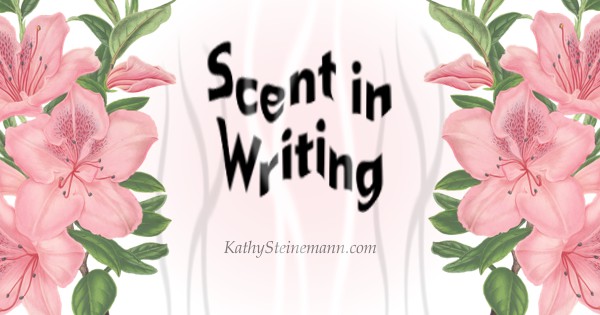
Why Should You Incorporate Scent in Your Prose or Poetry?
Our brains associate scent with memories. The whiff of an orchid might remind a woman of her senior prom, reawakening visceral recollections of music, embarrassment over a zipper that popped open at an inopportune moment, or the adrenaline rush of a passionate kiss behind the bleachers.
A pine freshener hanging from the rearview mirror of a taxi could flood a passenger with memories of a drive into the desert to ditch the corpse of an ex-lover. The memories might be so strong that he wets his pants or hears the non-existent screams of his dying victim.
Use scent to your advantage. Spritz aroma throughout your writing, as you might air freshener in a stale room, to stimulate readers’ olfactory centers.
Alternative Nouns for Scent
The word aroma conveys an impression of something pleasant, whereas smell could refer to unpleasant scents. Choose carefully. The difference between fragrance and stench can reverse the undertone of a passage.
Select a word, such as one of the following, that fits the situation.
A to W aroma, attar, aura, balm, bouquet, distillate, essence, fragrance, hint, perfume, pong, redolence, reek, smell, spoor, stench, stink, suggestion, tang, tinge, trace, trail, undertone, waft, whiff, whisper
What Produced the Smell?
Her hair smelled like bubblegum mixed with cotton candy.
A coppery stench oozed from the wound.
His bacon breath turned her stomach.
Why would bacon turn someone’s stomach? Story prompt?
The air was laced with smells that spoke of [insert an appropriate noun].
The following Pleasant and Unpleasant lists contain words you could include in direct comparisons. Transform nouns into adjectives by adding appropriate suffixes, or, if appropriate, insert as is. What seems pleasant to you could nauseate your protagonist , so you might want to switch some of the words.
Pleasant, A to F air-dried sheets, angels’ breath, anise, baby powder, baby’s breath, bacon, bananas, bubblegum, cedar, chamomile, chicken broth, chocolate, cinnamon, citrus, cocoa, coconut, coffee, cork, cotton candy, eucalyptus, flowers, a forest, fresh air, freshly baked bread, fruit
Pleasant, G to Y Grandma’s kitchen, grass, hand cream, hand sanitizer, honey, leather, lemon, licorice, lilacs, lime, maple sugar, a meadow, mint, ocean breezes, oranges, peaches, pine, pineapple, a pizzeria, popcorn, roses, scented soap, strawberries, a summer day, toast, vanilla, violets, wine, the woods, yeast
Unpleasant, A to H acetone, bad breath, a barnyard, bat guano, burning lint, a burning tire, camels’ breath, a cat box, a cemetery, a chicken coop, chlorine, cigars, cleaning fluid, copper, a corpse, decomp, a dog, dog breath, fish, fresh paint, funky fungus, a garbage dump, garlic, greasy rags, green bacon, hair dye, a hospital, hot tar
Unpleasant, K to V kitty-litter, a laundry hamper, a locker room, medicine, metal, mildew, mold, moldy dentures, nicotine, onions, pepper, plastic, rancid butter/cheese, ripe socks, rotten potatoes, a rotting whale carcass, scorched rubber, seaweed, a sewer, a skunk, smoke, stringent soap, sulfur, sweat, tobacco, toe jams, vinegar
Describe Scents With Well-Chosen Adjectives
If you’re writing a horror novel, you can create a feeling of suspense by foreshadowing. Contrast and compare. Maybe your monster has a delicate woodsy aroma that lures its victims deep into a musty lair where it dissolves the flesh from their bones with a caustic venom that reeks of corpses and singed hair.
Make a romance steamier by including adjectives such as sweaty, masculine, intoxicating, and spicy.
A to D acetic, acid, acrid, airy, ambrosial, antiseptic, aromatic, balmy, bitter, biting, bland, briny, burnt, caustic, clean, clear, comforting, cool, crisp, cutting, damp, dank, decaying, decomposing, delicate, dirty, distinctive
E to M earthy, elusive, exhilarating, faint, feminine, fetid, fishy, floral, flowery, forceful, foul, fragrant, fresh, fusty, gamey, gaseous, gentle, giddy, heady, heavy, intoxicating, invigorating, light, loamy, malodorous, masculine, mild, moist, musky, musty
N to R nauseating, new, odorous, overpowering, piquant, pleasant, polluted, potent, pungent, putrescent, putrid, rancid, rank, redolent, refreshing, repulsive, rich, rotten
S to W savory, sharp, sickly, smelly, sour, spicy, spoiled, squalid, stagnant, stale, sterile, stinking, strong, stuffy, subtle, sweaty, sweet, tainted, tangy, tantalizing, tempting, thrilling, tart, unclean, understated, uninteresting, wholesome
A Few Objects and Places That Help Incorporate Scent in Writing
B to W breath, clothing, elevators, feet, hands, hair, money, old books, pets, seating places, vehicles, weather, food, public transit, plants, wooden objects
Wax Creative
He stank like a conservative, she like a liberal.
He reeked of desperation.
The storm swept in with a roiling stench of fresh blood and burning bodies.
Agonizing odors smothered the battlefield, emanating unfulfilled dreams and fresh blood.
Something Might Have No Smell
F to U flat, fragrance-free, inodorous, neutral, odor-free, odorless, scentless, unscented
Lack of Scent Can Create Suspense
The tracker sniffed the footprints. Why could he detect nothing but moss and pine and fear? Only a moon-gloxx could leave such spoor.
Tabitha’s translucent form shifted and hovered above the bed, bereft of substance and scent.
Are You Interested in More Word Lists and Writing Tips?
If you haven’t done so already, please subscribe to my blog . (The link will take you to the subscription widget at the top left of this post.)
I usually post two to five times monthly, and you can discontinue your subscription at any time.
Discover more from KathySteinemann.com: Free Resources for Writers
Subscribe to get the latest posts to your email.
Type your email…

Please don't be shy. Leave a reply. Cancel reply
Your email address will not be published. Required fields are marked *
Save my name, email, and website in this browser for the next time I comment.
Notify me of new posts by email.
8 thoughts on “ 200+ Ways to Incorporate Scent: A Word List for Writers ”
These lists are so helpful, thank you Granny!
Thanks, Kate!
Next week: Over 300 Onomatopoeic Sound-Words.
I love these lists that you compile. Thanks!
Thank-you David. I love doing them. Do you have any words you’d like me to tackle?
I’d have to go through everything you’ve posted; chances are good that whatever I need is already here.
Have you ever compiled these in an ebook? I’d love to have them on my nook.
You must have read my mind. Not yet, but eventually that’s where they’ll go. The book will have even more words. In the meantime, all the lists are posted at:
http://kathysteinemann.com/Musings/category/word-lists/
I just remembered that my first editing passes often include removing someone sighing. Everyone’s always sighing. ::sigh:: I’d love a list that tackles this four letter word.
I’ve added it to my to-do list. Thanks for the idea!
Writers in the Storm
A blog about writing.

How to Write the Sense of Smell
by Ellen Buikema

Great writers make their stories authentic by allowing us to experience what their characters hear, see, smell, taste, and touch—capturing the senses so we are fully involved. Adding sensory details about smell into your writing creates a stronger story bond for your reader.
Scent memory is potent.
Memories fade as time passes, but a faint whiff of a loved one’s perfume can send your mind’s eye smack into a scene from a forgotten past. Sense of smell is a person’s most robust sense. You can be in a familiar place with a blindfold on and your nose will let you know where you are.
- The sense of smell is more closely linked with memory than any other sense.
- It brings emotions to mind. We are attracted to each other by smell.
- It helps us survive. A foul smell warns us of danger, like when we smell food gone bad or smoke choking the air.
Sensory unit in the classroom.
I introduced my young students to lessons on the five senses. For the sense of smell, I used those old black plastic film canisters with tiny holes poked in the lid so there was no way for the students to peek at what they were going to smell.
Every canister was labeled with a number. Each child checked out the canisters one at a time to avoid copycatting. Their answers were noted and discussed later during circle time. I enjoyed watching their facial expressions during whiffs. Everyone smiled at the cinnamon oil.
One child smelled my neck and said, “ You smell like my auntie. I don’t know why.” Must have been the cocoa butter.
Writers can use the sense of smell to show a character’s background or to move a plot forward.
Say your main protagonist is a child in an orphanage trying to come up with a way to run away from her situation. A fire breaks out somewhere in the building. She smells smoke, alerts whomever she can to the danger (she is a good-hearted character). Recognizing her chance to leave in the chaos, she grabs her belongings and runs, thereby moving the story forward.
Ways to develop a sense of smell in writing.
Smelling danger.
Our brains are wired in a way that makes us hyper-alert to unfamiliar sensory information, including smells. If you want to unsettle you characters, add in rotting, chemically, goosebump raising smells into your story.
- Our sense of smell adjusts and after a while there are scents you won’t notice.
- Walk back inside and take note of what you smell.
- Open up the refrigerator. Do you have a science experiment brewing in the rotter? (In our house that’s the drawer where food is forgotten and goes to die.)
- Think about how certain smells, known and unknown, might help to define your characters.
- Write a paragraph about the smells your character loves and hates.
Smelling recall of another time, person, or place
Smells can cause flashbacks to warm, wonderful times or a place of horror. The same smell can bring joy or pain dependent upon the individuals experience at the time they were exposed to that particular odor.
Some people love the smell of lilies. I cannot stand them. To me they reek of death. I don’t know why, and probably would need hypnosis therapy to figure it out.
- Your best friend’s house from childhood
- Family homes
- Movie theaters, drive-in and indoors
- What smells do you associate with those places in time? What emotions?
- Write a paragraph about the odors and try to call to mind the emotion without calling it by a specific name.
Many authors use sensory writing well.
The following quotes are from writers who use the sense of smell effectively..
“The smell of a grow room is the scent of transpiration, of fecund exertion. It’s the trapped sweat of a high school locker room, the funk of a hockey jersey steaming on a radiator.” Bruce Barcott, Weed the People
“We moved on the Tuesday before Labor Day. I knew what the weather was like the second I got up. I knew because I caught my mother sniffing under her arms. She always does that when it’s hot and humid, to make sure her deodorant’s working. I don’t use deodorant yet. I don’t think people start to smell bad until they’re at least twelve. So I’ve still got a few months to go.” Judy Blume, Are You There God? It’s Me, Margaret
“Chili dogs, funnel cakes, fried bread, majorly greasy pizza, candy apples, ye gods. Evil food smells amazing -- which is either proof that there is a Satan or some equivalent out there, or that the Almighty doesn't actually want everyone to eat organic tofu all the time. I can't decide.” Jim Butcher, Side Jobs: Stories from the Dresden Files
“I emitted some civetlike female stink, a distinct perfume of sexual wanting, that he had followed to find me here in the dark.” — Janet Fitch, White Oleander
“So when I closed my eyes, when I drifted into a half dream and found myself in that underpass, I may have been able to feel the cold and smell the rank, stale air, I may have been able to see a figure walking towards me, spitting rage, fist raised, but it wasn’t true.” Paula Hawkins, The Girl on the Train
“Mr. Leopold Bloom ate with relish the inner organs of beasts and fowls. He liked thick giblet soup, nutty gizzards, a stuffed roast heart, liver slices fried with crust crumbs, fried hencods’ roes. Most of all he liked grilled mutton kidneys which gave to his palate a fine tang of faintly scented urine.” James Joyce , Ulysses
"After a while, I stretched out on one of the benches and closed my eyes. The kerosene smelled like lacquer, and I kept feeling waves of nausea. My bones were cold. I could isolate the icy scent of pine trees that sneaked through the walls. Sometimes grace is a ribbon of mountain air that gets in through the cracks." Anne Lamott, Grace (Eventually), Thoughts on Faith
“…ripe piss, ancient cabbage, dead and rotting rat — was on Danny's skin, in his hair, in the fibers of his suit; Varian inhaled that scent like a penance.” Julie Orringer , The Flight Portfolio
“There is little difference between the Zulu warrior who smeared his body with Lion’s fat and the modern woman who dabs hers with expensive perfume. The one was trying to acquire the courage of the king of beasts, the other is attempting to acquire the irresistible sexuality of flowers. The underlying principle is the same.” Tom Robbins, Jitterbug Perfume
Other Links we love:
- Here are some Fun Smelly Facts .
- Check out 30 of the Best Words to Describe Smell in Your Writing .
If you want to make your readers feel what you’re describing, use the power of scent. Understanding how compelling the sense of smell can be, use it to entice your reader.
What sense do you use when writing? What writers do well with sensory writing? Do you have any examples you’d like to share?
* * * * * *
About Ellen

Author, speaker, and former teacher, Ellen L. Buikema has written non-fiction for parents and a series of chapter books for children with stories encouraging the development of empathy—sprinkling humor wherever possible. Her Works In Progress are, The Hobo Code , YA historical fiction and Crystal Memories , YA fantasy.
Find her at http://ellenbuikema.com or on Amazon .
Top Image Photo by samer daboul from Pexels
23 comments on “How to Write the Sense of Smell”
That was a fun exercise. Thanks!
I went through my debut novel with the search function, and found 54 instances of using smell, odor, aroma, wafted, or scent. I have a specific step in my process which has me consider 1) the senses the character is using, and 2) the senses I hope to elicit in the reader for every scene. The only duplicates were pine-scented cleaner and the outdoor smell of real pine trees. Not bad.
I make an effort to consider all the senses, regular and ESP and kinesthetic, but only choose a couple at a time for a scene. A laundry list is appropriate very rarely.
Here's an example of a sweater left behind by Andrew O'Connell at Kary's house when he stayed there, one of two similar fisherman's Irish sweaters his mother knit for him. It has to go back with his friend and manager. The last sentence is in italics in the book as a direct thought.
Her fingers dared. She pulled the rough heavy sweater into her lap, tidied the folds, tucked the long sleeves neatly into the bundle. The faint aroma of lanolin thrust her backbrain into memories of nursing… Such a long time ago. She restrained herself from burying her face in the woolen bulk. She refused to name the other scent. It will have to go back. Pride's Children PURGATORY.
I picked that one because of the double use of smell.
It's interesting that you even use a sensory check as part of your writing process. 54 references is impressive. I'm wondering whether you search using the words you mentioned: smell, odor, aroma, wafted, or scent? That's a great tip to figure out how smell is represented in one's manuscript. Thanks, Alicia! Kris
Yes - I searched with all the words I thought might find me scent references, and was pleased to find so many.
I have a damaged brain (ME/CFS), and the only way I can write is to have a detailed written process - a specific set of prompts/questions that I've developed since I started to write. That way I can compartmentalize each and make sure it at least gets considered for a scene.
If curious, here's the link: https://liebjabberings.wordpress.com/2013/08/15/left-brain-right-brain-hemisphere-wars-and-writers-block/
I know scientists no longer consider the left/right dichotomy a physical one, but it still works for me as a metaphorical one, switching from a logical to an intuitive approach and back in a regular alternation when I get saturated on one or the other. It probably makes me slower than I might otherwise be, but it compensates for my deficiencies enough to write complex fiction.
I love your example, Alicia. It pulls me right into the scene and I truly feel for her, especially as a mom.
I hadn't thought about it before but a balance must be had between too much and too little sensory information in a scene. Thank you for bringing that point up!
Or possibly you're writing pure literary fiction? And the point IS the sensory information?
I don't - I'm too wedded to plot and characterization - but it is a viable option, and there are some beautiful examples.
I learned that one from Sol Stein: two to three sensory details seem to be about right, and one should be familiar and one fresh. Not a rule so much as a guideline, because sometimes the best effect is to pile on more, sometimes to select one perfect detail. Or you start to sound like a robot. That's one of the things I love about writing, reaching for that balance.
Thanks for this, Ellen. I use smells often in my writing--it seems to be the most underutilized sense by new writers, IMHO. Great links, too!
Hi Karen, I'm glad the links are useful!
My early writing had a serious lack of sensory information. Critique partners modeled better work, showing what I'd missed. Adding sensory details makes a big difference.
HI Ellen, I loved all the examples, especially the Anne Lamott one: Sometimes grace is a ribbon of mountain air that gets in through the cracks. Her contrast to kerosene and lacquer is powerful.
Thanks for the reminder to incorporate this sense into our writing. It can ramp up the intensity or deepen the solitude, all with a reference to smell.
Thanks, Kris!
There's nothing quite like sense of smell to entice us into a story.
I especially like Anne Lamott's quote.
When I left home for college my mom gave me strawberry-scented stationery so I could write her. To this day, the smell of strawberries makes me homesick.
Wow, Jeanne what a powerful connection!
Excellent advice. The sense of smell IS a powerful one. I had to go through my current ms following Alicia's example. I found 17 uses of 'aroma', 13 of 'smell' and 6 of scent, and a smattering of others.
My takeaway from this post: Tie the sense of smell to an emotion for more power. My current wip is set on a cattle ranch. The heroine is a city girl, so she's going to notice the smells. She also spends time with the ranch cook--more opportunities to work in the sense.
Ooh, Terry you'll have a lot of fun with this. I can tell already.
I grew up close to Chicago and never experienced the intense scent of cow patties from a dairy farm until middle school.
You'll have to let us know how your heroine deals.
Thanks for this one, Ellen! I love to use smells in my writing. You're right on the money about them being a powerful memory trigger that can suck a reader right into a scene. One of my favorites from my own work comes from my first book, Killing Karma. It describes James' first step into a thrift store.
A quick twenty-minute drive brought James to his first thrift shop experience. Walking through the door, the realization hit him; this was not going to be his typical shopping trip. The first thing to jump out was the smell. It wasn’t the crisp linen and perfume scent he encountered in the department stores he occasionally shopped in with his mother. It reeked of something a little more . . . well . . . old. The smell reminded him of the house where the aging neighbor lady used to care for him while his mother worked. It made the hair on the back of his neck stand up.
Great example, Eldred!
I really enjoyed reading your Karma series.
What powerful examples you used, Ellen. Wow. Has me looking through my manuscript for those hits. And I think I did okay. a total of 93 references to aromas, scents, smells, stench, and stink. Helps to have your characters explode a stink bomb. lol
A stink bomb. Wow. I'll bet there were some interesting reactions to that Lynette! I was concerned that I overdid the examples. LOL. I guess I did okay.
I've started reading through each scene and noting where I need more sensory input. The editing process seems never ending.
Yes. The reactions were the fun part.
You did more than okay with examples. And while I agree the editing process seems never ending, I strongly suspect you'll add the right amount of sensory input and find the end.
I think when you can describe the smells in a book and the reader is transported to the place or reacts to the smell, you've done your job.
My books are more apt to have smells of florals, food, and perfumes/colognes, etc...
[…] https://writersinthestormblog.com/2021/11/how-to-write-the-sense-of-smell/ […]
How to Describe Smell in Writing Vary your vocabulary. Instead of saying a character smelled something, describe the specific redolence they encounter. ... Link other senses. Scent is linked to our other senses, particularly taste. ... Think outside the box. Sometimes smells surprise us. ... Describe scents in detail.
Some common synonyms of stinking are fetid, fusty, malodorous, musty, noisome, putrid, and rank. While all these words mean "bad-smelling," stinking and fetid suggest the foul or disgusting.
Subscribe to WITS
Type your email…

Recent Posts
- Authorsplaining: an Insidious Invitation for Readers to Skim
- The Power of Character Descriptions
- Book Distribution 101 for Writers
- I DARE YOU: The Strange Beginning of an Amazing Journey
- Ten Things I’ve Learned as a Hybrid Author
- Ellen Buikema
- Jenny Hansen
- Lynette M. Burrows
- Lisa Norman
Copyright © 2024 Writers In The Storm - All Rights Reserved
- PRO Courses Guides New Tech Help Pro Expert Videos About wikiHow Pro Upgrade Sign In
- EDIT Edit this Article
- EXPLORE Tech Help Pro About Us Random Article Quizzes Request a New Article Community Dashboard This Or That Game Popular Categories Arts and Entertainment Artwork Books Movies Computers and Electronics Computers Phone Skills Technology Hacks Health Men's Health Mental Health Women's Health Relationships Dating Love Relationship Issues Hobbies and Crafts Crafts Drawing Games Education & Communication Communication Skills Personal Development Studying Personal Care and Style Fashion Hair Care Personal Hygiene Youth Personal Care School Stuff Dating All Categories Arts and Entertainment Finance and Business Home and Garden Relationship Quizzes Cars & Other Vehicles Food and Entertaining Personal Care and Style Sports and Fitness Computers and Electronics Health Pets and Animals Travel Education & Communication Hobbies and Crafts Philosophy and Religion Work World Family Life Holidays and Traditions Relationships Youth
- Browse Articles
- Learn Something New
- Quizzes Hot
- This Or That Game
- Train Your Brain
- Explore More
- Support wikiHow
- About wikiHow
- Log in / Sign up
- Education and Communications
- Writing Techniques
How to Describe a Smell
Last Updated: March 4, 2023 Fact Checked
This article was reviewed by Gerald Posner . Gerald Posner is an Author & Journalist based in Miami, Florida. With over 35 years of experience, he specializes in investigative journalism, nonfiction books, and editorials. He holds a law degree from UC College of the Law, San Francisco, and a BA in Political Science from the University of California-Berkeley. He’s the author of thirteen books, including several New York Times bestsellers, the winner of the Florida Book Award for General Nonfiction, and has been a finalist for the Pulitzer Prize in History. He was also shortlisted for the Best Business Book of 2020 by the Society for Advancing Business Editing and Writing. This article has been fact-checked, ensuring the accuracy of any cited facts and confirming the authority of its sources. This article has been viewed 634,649 times.
We have plenty of words to describe other senses and experiences, but the sense of 'smell' seems to defy words. The human sense of smell is not heavily used compared to that of many animals. Still, it's a deep and rich sense, and it can enhance how you communicate (especially when you're crafting a story or describing a moment).
It can enhance how you experience your other senses (particularly taste, such as tasting complex flavors in wine and dark chocolate ), and even with determining when fruit is ripe or milk is spoiled. If you'd like to pin down a smell in words, here are some tips that can help you.
- Do you want to capture the nature of the smell or the overall quality?
- Do you want your reader or listener to recognize an unfamiliar smell based on your description?
- Do you want to evoke a certain meaning or feeling in your reader?

- Remove distractions. Don't smoke or wear fragrances or drink strongly scented beverages.
- Take breaks. The sense of smell acclimates or becomes accustomed to a smell. Remove the smell or remove yourself from the smell for a while if you stop being able to smell it or smell it distinctly.
- 3 Notice any words, images, feelings , or memories that the smell brings to mind. If you have any sort of gut reaction, pay attention to it. Make notes if you can, even if they're disjointed.
- 4 Notice descriptions of smells when you see or hear them. This could be advertising ("lemony fresh", "fresh pine scent"), poems , or technical descriptions. Look especially hard at other sources that are similar to what you're trying to convey. [3] X Research source
- Smell origins may take the form of a noun (the smell of leather) or an adjective (a leathery smell). The adjective may describe the effect where the noun describes a specific source.
- Use imaginative adjectives. Saying that a vile smell was "like sucking puss out of a festered wound" does not actually describe the smell as such, but pulls on so many different thoughts and memories that the mind races to label it odious.

- Be creative. What does spring smell like?

- Use verbs for the smells themselves. Smells can waft, distract, hint, permeate, suggest, confuse, conjure images, command attention, or intrude upon the consciousness.
- Use verbs to describe the source of the smell. Here are some actions that you might associate with smells: baking, frying, digging, sweating, burning, rotting.
- Visualize what the smell does. Does it creep into your nose? Wrap around you? Follow you? Bombard your nostrils?
- Sight. Can a smell be bright or dark? Can a smell be pink or green? Can it be clear or hazy? Can it be fast? Slow? Sluggish? Smooth?
- Sound. Can a smell be dissonant? Harmonious? Loud or quiet?

- Taste. Smell is closely associated with taste, so tastes are a good choice if they fit. Is a smell sweet or sour, salty or bitter? Is it chocolaty, fruity, or yeasty?
- Is the smell startling or jarring? Soothing or comforting? Earthy or natural? Chemical or antiseptic?
- Smell is often strongly associated with memories, but this is only useful if you're describing the smell to yourself (such as in a journal) since you can't know what somebody smelled in their memories.
Sample Descriptions of Smells

Community Q&A
- Go the other way. Think of a feeling or idea that you want to evoke. What smells do you associate with that feeling or idea? Thanks Helpful 0 Not Helpful 0
- Learn the vocabulary of smells relating to those smells that interest you, see how others describe those smells. If you are interested in oenology or certain foods, read up on the subjects. Associate the words with your firsthand observations of the smells themselves, if possible. Thanks Helpful 0 Not Helpful 0
- Practice describing smells, good and bad. See what you notice the next time you wander through the perfume section or the scented candles. Thanks Helpful 0 Not Helpful 0

- Some smells signal hazards. If you smell gas, chemicals, or something unknown and worrisome, avoid breathing it and report it to authorities as appropriate. Thanks Helpful 2 Not Helpful 0
You Might Also Like

- ↑ https://www.butte.edu/departments/cas/tipsheets/style_purpose_strategy/descriptive_essay.html
- ↑ https://www.epa.vic.gov.au/report-pollution/report-odour/describe-odour
- ↑ https://marymckernan.com/describing-smells/
- ↑ https://grammar.yourdictionary.com/style-and-usage/descriptive-words-for-scents.html
About This Article

To describe a smell, take some time to sit with it and jot down any words, images, or emotions that come to mind when you’re smelling it. You can describe the quality of the smell with adjectives like “musty” or “putrid,” or you might choose adjectives that describe its source, like “skunky” or “floral.” Try to be specific and detailed, but keep your language simple so the description isn’t overblown. For more tips on describing a smell, like how to borrow words from other senses, keep reading! Did this summary help you? Yes No
- Send fan mail to authors
Reader Success Stories
Ingrid Baluchi
Jul 24, 2021
Did this article help you?
Anne Molinas
Aug 9, 2016
Tess Jarray
Jun 19, 2019

Featured Articles

Trending Articles

Watch Articles

- Terms of Use
- Privacy Policy
- Do Not Sell or Share My Info
- Not Selling Info
Get all the best how-tos!
Sign up for wikiHow's weekly email newsletter
- Bookfox Academy (All Courses)
- Write Your Best Novel
- How to Write a Splendid Sentence
- Two Weeks to Your Best Children’s Book
- Revision Genius
- The Ultimate Guide to Writing Dialogue
- Your First Bestseller
- Master Your Writing Habits
- Writing Techniques to Transform Your Fiction
- Triangle Method of Character Development
- Children’s Book Editing
- Copy Editing
- Novel Editing
- Short Story Editing
- General Books
- Children’s Books
9 Ways to Describe Scents in your Book
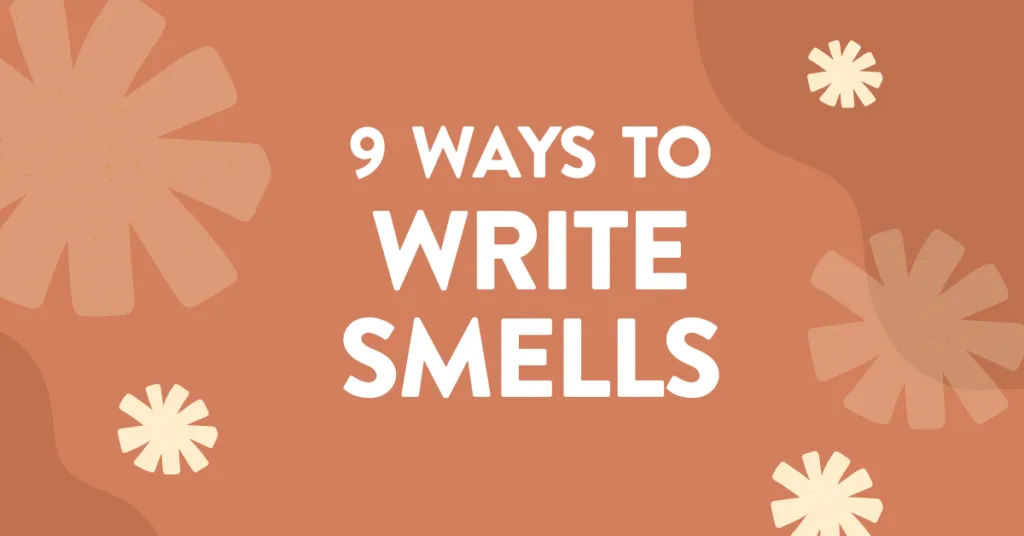
Smell is the best sense to use in your writing.
Yes: it’s better than sound, better than sight, better than touch.
There’s something about smell that bypasses all of the normal roadblocks in our brain and goes straight to memory and animal instincts.
It’s primitive.
It’s elemental.
If you want to really immerse a reader in the world of your book and make them forget everything else, use smell.
The writers below use smell in fantastic ways. For each one, I’ll show you how they’re using scent in their fiction, and also show you how to copy their techniques for your own writing.
1. Characterize through Scents
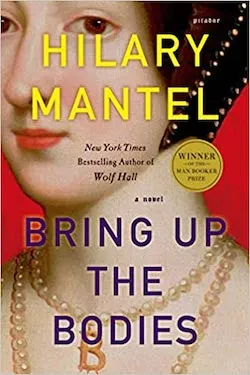
In Hilary Mantel’s novel “Bring up the Bodies,” she contrasts two characters by associating one with hideous smells and the other with a delightful smell. The shock of pairing the two together work quite well:
She is jaundiced, and there is an invalid fug in the room – the faint animal scent of the furs, a vegetal stench of undrained cooking water, and the sour reek from a bowl with which a girl hurries away: containing, he suspects, the evacuated contents of the dowager’s stomach … I could have brought her a lemon in my saddlebag, he thinks.
The bedridden person is associated with all the gross smells:
- animal scent of furs
- vegetal stench of cooking water
- reek of vomit
But to create a sharp contrast, Mantel associates our visitor with the bright, happy citrus smell of a lemon.
Mantel uses smell to help us get a feel for these characters: one has more of a sadder outlook on life, and the other more optimistic.
2. Create Layers of Smells
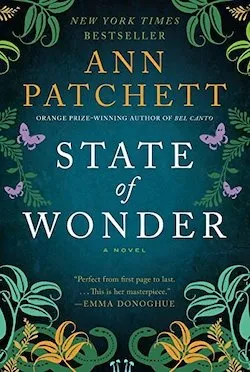
Ann Patchett, in “State of Wonder,” teaches writers that we don’t have to focus on a single smell.
Through a complex mixture of a bunch of smells, we get a sense of a place:
There were layers upon layers of scents inside the hammock – the smell of her own sweat which brought up trace amounts of soap and shampoo; the smell of the hammock itself which was both mildewed and sunbaked with a slight hint of rope; the smell of the boat, gasoline and oil; and the smell of the world outside the boat, the river water and the great factory of leaves pumping oxygen into the atmosphere, the tireless photosynthesis of plants turning sunlight into energy, not that photosynthesis had an odor. Marina inhaled deeply and the scene of the air relaxed her. Brought together, all those disparate elements turned into something wholly pleasant. She wouldn’t have thought that would be the case.
Just count the number of scents in this passage:
- boat/gasoline/oil
- river water
It’s quite a mixture that gives us a panoramic vision of this place. A 360 degree scent-tour.
I like that the narrator expects these smells to be unpleasant, but there’s a nice reversal at the end of the paragraph: actually, she loves these smells quite a lot!
3. Create Disgust
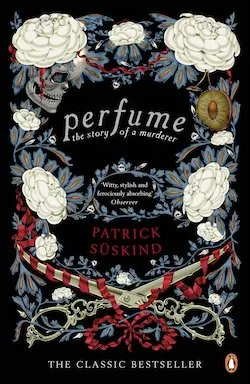
One of the best things you can do in your writing is create a reaction in your reader.
If they react in any way, it means your book is affecting them. It means they aren’t bored.
One way to get a strong reaction from your reader is to make them feel disgusted.
Often, when writers think about scents and smells, they think of the happy, wonderful smells, but in Patrick Suskind’s “Perfume,” he focuses on the revolting smells, and it’s quite powerful:
Here, then, on the most putrid spot in the whole kingdom, Jean-Baptiste Grenouille was born on July 17, 1738. It was one of the hottest days of the year. The heat lay leaden upon the graveyard, squeezing its putrefying vapor, a blend of rotting melon and the fetid odor of burnt animal horn, out into the nearby alleys. When the labor pains began, Grenouille’s mother was standing at a fish stall in the rue aux Fers, scaling whiting that she had just gutted. The fish, ostensibly taken that very morning from the Seine, already stank so vilely that the smell masked the odor of corpses.
Are you grossed out yet? Are you grimacing?
We have a litany of disgusting odors:
- Decomposing bodies
- Burnt animal horn
- Rotting melon
- Rotten fish
This is a book about someone with a remarkable gift of smell, so it’s perfectly ironic that he’s born into a cess pool of stench.
Ultimately, if you want to get a rise out of your reader, come up with the grossest three or four things you can imagine, and get your protagonist into a situation where they have to smell it.
4. Evoke Life Stages through Smell

If you want to go into the backstory of your main character, one of the best ways to do that is smell.
Here in Gillian Flynn’s “Sharp Objects,” a main character smells sex in the present moment, and thinks back to how the predominant smell of her childhood was bleach:
I was in college by the time I realized I liked the smell of sex. I came into my friend’s bedroom one morning after a boy darted past me, smiling sideways and tucking his socks into his back pocket. She lazing in bed, splotchy and naked, with one bare leg dangling out from under the sheets. That sweet muddy smell was purely animal, like the deepest corner of a bear’s cave. It was almost foreign to me, this lived-in, overnight odor. My most evocative childhood scent was bleach.
But this smell is also doing characterization: she’s no longer the type of person that likes the chemical cover-up of bleach, and its association with cleanliness.
Now she’s the type of person who loves the dirty, animal scent of sex.
Associating smells with certain stages of your character’s life really helps the reader get a handle on where they came from and where they are now.
5. Unusual Reactions to Smells
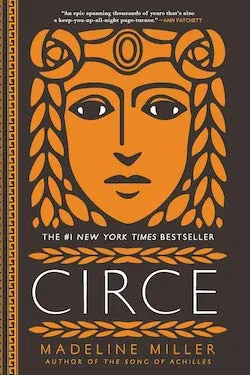
In Madeline Miller’s “Circe,” we have a goddess who gets pregnant. And suddenly, all the smells on her island that used to give her pleasure, start to make her want to vomit:
I would have laughed if I were not so ill. The sour tang of cheese in the kitchen, the salt-stink of seaweed on the breeze, the wormy earth after rain, the sickly roses browning on the bush. All of them brought the bile stinging to my throat.
Cheese, seaweed, fresh earth, and roses: these are pleasant scents. But because she is pregnant and strong smells revolt her, she describes them in unexpected ways:
- Wormy earth
- Sickly roses
Writers, don’t always describe the smell of something in a predictable way.
If your character likes the smell of a disgusting thing, or hates the smell of something lovely, that goes a long way in surprising your reader and building this character.
6. Describe Place Through Scents
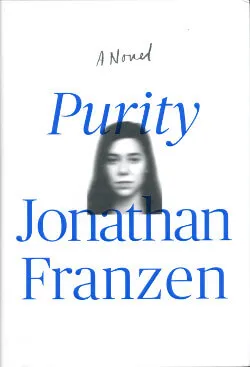
I see a lot of boring descriptions from aspiring writers.
They use lots of details and talk about how everything around their character looked.
But if you’d like to change it up, try describing a place with the limitation of only using a single sense: hearing, for instance, or … smell.
In Jonathan Franzen’s “Purity,” our main character Pip arrives in a new place and describes it solely through the sense of smell:
“But smell had also been heaven. Not outside the airport of Santa Cruz de la Sierra, where the wafts of cow shit from adjacent pastures mingled with the smellable inefficiencies of engines banned from California long before Pip was born; not in the Land Cruiser sure-handedly piloted by a taciturn Bolivian, Pedro, through diesel particulates on the city’s ring boulevards; not along the Cochabamba highway, where every half kilometer another brutally effective speed bump gave Pip a change to smell fruit rotting and things dying and be approached by the sellers of oranges and friend things who’d install the speed bumps in the first place … but when the road, after plunging through dry forest and through cooler woods half cleared for coffee plantings, finally bottomed out along a stream leading into a little valley more beautiful than any place Pip could have imagined: then the heaven had commenced. Two scents at once, distinct like layers of cooler and warmer water in a lake — some instantly flowering tropical tree’s perfume, a complex lawn-smell from a pasture that goats were grazing — flooded through her open window.”
The commute from the airport is described by:
- The smell of cow manure and ancient engines
- Rotting fruit and dying things
And then the smells transition from ugly smells into glorious smells: tree perfume and lawns.
That way the smells aren’t a list, but more of a journey, and the reader feels like they’re leaving one place and reaching a new one.
Also, I like that all the smells in this passage are a mixture of machines and nature (animals/plants). It’s a perfect encapsulation of a third world country (and I’ve been to Bolivia — I know!).
7. Create Mystery with Smells
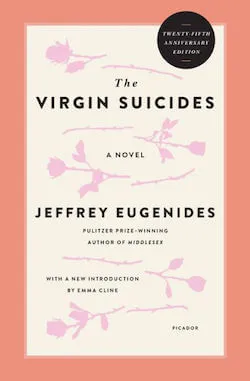
In “The Virgin Suicides” by Jeffrey Eugenides, the entire book is a mystery: why do the five girls of a religiously conservative family all commit suicide?
So at the end of the book, after the family has moved out, the boys of the town are confronted with a strange smell. And this smell is someone an answer to the mystery of why the girls killed themselves, but it’s also exceptionally mysterious in itself:
It was Uncle Tucker, too, who first detected the smell we could never identify. One morning, as Bonnie came out to the dirt mound, she left the front door open, and Uncle Tucker became aware of an odor unlike any other he had ever encountered. At first he thought it was merely an intensification of Bonnie’s wet-bird aroma, but it persisted even after she returned inside, and when we woke up, we smelled it, too. For even as the house began to fall apart, casting out whiffs of rotten wood and soggy carpet, this other smell began wafting from the Lisbons’, invading our dreams and making us wash our hands over and over again. The smell was so thick it seemed liquid, and stepping into its current felt like being sprayed. We tried to locate its source, looking for dead squirrels in the yard or a bag of fertilizer, but the smell contained too much syrup to be death itself. The smell was definitely on the side of life, and reminded David Black of a fancy mushroom salad he’d eaten on a trip with his parents to New York. “It’s the smell of trapped beaver,” Paul Baldino said, sagely, and we didn’t know enough to disagree, but we found it hard to imagine such an aroma issuing from the ventricles of love. The smell was partly bad breath, cheese, milk, tongue film, but also the singed smell of drilled teeth. It was the kind of bad breath you get used to the closer you go in, until you can’t really notice because it’s your own breath, too. Over the years, of course, the open mouths of women have blown into our faces ingredients of that original smell, and occasionally, poised over unfamiliar bedsheets, in the dark of that night’s betrayal or blind date, we’ve greedily welcomed any new particular reek because of its partial connection to the fumes that began blowing from the Lisbon house shortly after it was closed up, and never really stopped. Right now, if we concentrate, we can smell it still. It found us in our beds, and on the playground as we played Kill the Man with the Ball; it came down the stairs of the Karafilises’ so that Old Mrs. Karafilis dreamed she was back in Bursa cooking grape leaves. It reached us even over the stink of Joe Barton’s grandfather’s cigar, as he showed us the photo album of his Navy days, explaining that the plump women in petticoats were only his cousins. Strangely enough, even though the smell was overpowering, we didn’t once think of holding our breaths, or, as a last resort, breathing through our mouths, and after the first few days we sucked in the aroma like mother’s milk.
These are the important bits of information in that passage:
- The smell is too syrupy to be death
- The smell is like sex (trapped beaver)
- The smell is the embodiment of sexual desire
- The boys of the town ended up liking the smell
So what can we learn from this passage?
It’s okay to have smells be metaphorical . Don’t limit your writing to the smell of meat or with the smell of goats. This is the smell of sexual desire.
This smells symbolizes memory . The family has left town, but the boys of the town cannot forget them. They keep on smelling them in their abandoned house. That’s because these girls who committed suicide haunt the boys of the town — they won’t be forgotten.
It’s okay to have extended smells . Most writers will bring up a smell and then move on to something else in the next part of the sentence. Eugenides really dwells with this smell for quite a long time — almost 500 words!
8. Contrast Your Smells
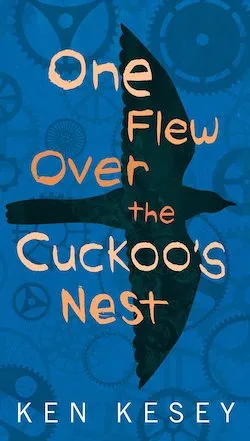
It’s always a good idea to contrast two types of smells.
One that’s enjoyable, one that’s horrible. Or one that has good connotations/memories, and one with terrible connotations/memories.
Here in Ken Kesey’s “One Flew Over the Cuckoo’s Nest,” we see a sharp contrast between ugly smells and healthy ones, with Jack Nicholson’s character McMurphy representing the healthy work:
“Sweeping the dorm soon’s it’s empty, I’m after dust mice under his bed when I get a smell of something that makes me realize for the first time since I been in the hospital that the big dorm full of beds, sleeps forty grown men, has always been sticky with a thousand other smells – smells of germicide, zinc ointment, and foot powder, smell of piss and sour old-man manure, of Pablum and eyewash, of musty shorts and socks musty even when they’re fresh back from the laundry, the stiff odor of starch in the linen, the acid stench of morning mouths, the banana smell of machine oil, and sometimes the smell of singed hair – but never before now, before he came in, the man smell of dust and dirt from the open fields, and sweat, and work.”
What a list that is!
13 smells, most of them a little unpleasant, and then the healthy smell of dust and dirt and sweat and work.
Just figure out whether you want to end on an happy note, with a good smell, or end on a sad note with a hideous smell.
9. Emotional Impact
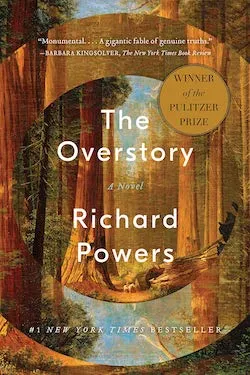
Smells have strong emotional impacts, and you should be calling attention to that.
Don’t just describe what something smells like: tell the reader what impact that has on your character.
Check out how Richard Powers handles the smell of a tree in “The Overstory”:
“And in a few steps, she’s outside. The smell is on her before she reaches the trees—the scent of resin and wide western places. The clean smell of her childhood’s only untouched days. The music of the trees, too, tuning the wind. She remembers. Her nose slips into one of those dark fissures between the flat terra-cotta plates. She falls into the smell, a devastating whiff of two hundred million years ago. She can’t imagine what such perfume was ever meant to do. But it does something to her now. Mind control. It’s neither vanilla nor turpentine, but replete with highlights of each. A shot of spiritual butterscotch. A sprig of pineapple incense. It smells like nothing but itself, pungent and sublime. She breathes in, eyes closed, the tree’s real name.”
This is a smell that makes her remember her childhood. A mixture of vanilla and turpentine that makes her feel like she knows this tree, like she’s having a spiritual encounter with it.
This passages goes far beyond mere description and really gets into the philosophy of what a tree smell is, and its purpose, and how it affects this character.
Bonus Smells:
Donna Tartt, “The Goldfinch” Nostalgic smells.
“More than anything I was struck by the smell — for the plastic, pool-liner odor of masking tape had grown overwhelming from being shut up in such a small space, an emotionally evocative odor I hadn’t remembered or thought of in years, a distinct polyvinyl reek that threw me straight back to childhood and my bedroom back in Vegas: chemicals and new carpet, falling asleep and waking up every morning with the painting taped behind my headboard and the same adhesive smell in my nostrils.”
Ngugi wa Thiongo’o “Wizard of the Crow” The stench of a corrupted soul.
“I can’t quite explain it, but the smell was stronger than that of rotting garbage, a rancid belch, or a ripe fart. Sometimes when I am walking the streets I can detect it from among all other scents in the air and often I come across people and buildings that have it about them more often and more strongly than others. But by the same token I also come across people whose fresh smell seems to drive the foulness away. There are times when the foul and the fresh appear to struggle for the right of passage into my nostrils, like evil and good spirits fighting for the domination of the soul.
“But then Constable Arigaigai Gathere arrives. The whole house stunk during his entire stay. And even after he left, the heavy stench remained. That is what propelled me into a cleansing frenzy.”
Still, no matter what he did, the stench would not go away. Maybe a dead rat was rotting somewhere in the house, so he searched under the bed, the chairs, everywhere, turning things over, but to no avail. Tired and frustrated, he sat by the table in the living room. Suddenly he knew the source of the foulness: the police officer’s money. KamltT immediately put all the notes in a plastic bag, put the bag into an empty cocoa can, and closed the lid. He dug a hole outside and buried the can.
“The smell grew faint but was still in the air,” he told Nyawlra. “But when you entered the house it disappeared altogether, replaced by the fresh scent of flowers.”
Related posts:

Leave a Reply Cancel reply
Your email address will not be published. Required fields are marked *
Thank you for the post. I learned a lot. Never thought about including smells in the ways presented here. I am looking forward to implementing these in my writings.
Well, thanks for this, but, from the excerpts I would be quite put off of reading those books! In that way, I suppose, you could say the sections about scent were quite compelling, like watching a train wreck, but not effective at making a happy reader! Or perhaps I am too scent-sensitive!
Yeah, it really depends on what type of book you’re writing and what audience you’re shooting for.
But in general, I would say getting a rise out of readers is essential — making them long for the smell of a cookie or recoil from the smell of manure.
Both can be good writing.
This was a great article! Obviously I’ve encountered the description of smells while reading but never thought to incorporate them in my writing with so much intention. Thank you for dissecting this for us!

Every writer NEEDS this book.
It’s a guide to writing the pivotal moments of your novel.
Whether writing your book or revising it, this will be the most helpful book you’ll ever buy.
Learn how to:
- Nail chapter endings
- Surprise your reader with plot twists
- Describe a character for the first time
- Write a killer ending
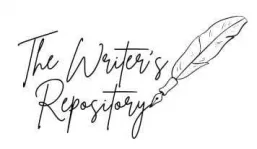
Smell of Nature: Descriptions that Appeal to the Senses (2024)
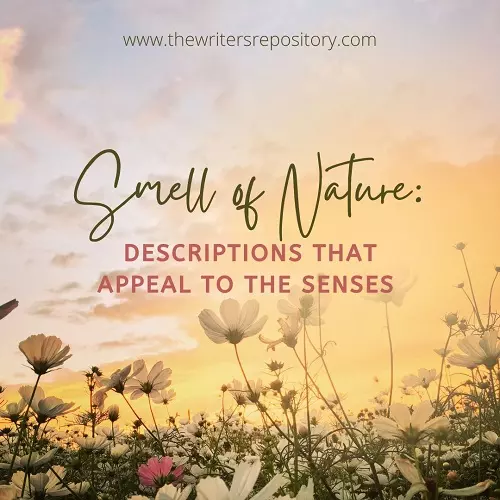
Are you looking for descriptions for the smell of nature? You’ve come to the right place! From mildewed to petrichor, we have all the words you need to describe the beautiful natural world that surrounds us!
Jump to Section
Smell as a Potent Descriptor in Writing
Examples of natural smell descriptions in writing, fresh and light, deep and pleasant, richly unpleasant.
Related posts: Vivid Description in Creative Writing Examples
This post may contain affiliate links, which means that I may receive a commission, at no cost to you, if you make a purchase using these links.
The sense of smell is known as the strongest sense for memory inducer. When your writing contains descriptions of various smells, you have the potential to trigger your reader’s most nostalgic memories; hence, your writing will stay with them longer !
Inject your writing with the smell of nature whenever appropriate, be it when your character is out exploring nature, or to draw comparison / parallel between their current situation and the natural world around them.
Let’s look at two examples to illustrate this point.
1. This first example lets us experience the world as the character in the story experiences it. The rich description transports us to Louisiana in September, how heady and overwhelming it is, just as the author describes it.
Louisiana in September was like an obscene phone call from nature. The air–moist, sultry, secretive, and far from fresh–felt as if it were being exhaled into one’s face. Sometimes it even sounded like heavy breathing. Honeysuckle, swamp flowers, magnolia, and the mystery smell of the river scented the atmosphere, amplifying the intrusion of organic sleaze. It was aphrodisiac and repressive, soft and violent at the same time. – Tim Robbins, Jitterbug Perfume (1990)
2. This second example draws a parallel between what the character is feeling and the world around them. Autumn smelled acrid to the character in this story, and it mimicked the fear he felt inside.
The acrid scents of autumn, reminiscent of slinking beasts, make me fear. – D.H. Lawrence, The Complete Poems (1994)
Three Broad Categories of Natural Smell
Do you know that human’s olfactory sense can detect 1 trillion odors ? It’s no surprise that we frequently struggle to describe the smell of nature, with its plethora of colorful scents. But, a good writer must try, right?
Let’s classify natural smells into three categories . Here they are, with some alternative words to describe them.
When I think of nature, my mind automatically goes to an open air, green area with lots of sunshine, free of manmade buildings. Meadows, forests and mountains are some examples. The smells associated with such places are fresh and light.
Another way to say this would be:
– Airy : a flighty kind of smell that just wants to lift you up to new heights. – Alpine : reminiscence of high mountains. – Clean : that odorless smell that fills up the lung when you’re surrounded by nature. – Crisp : a sense of cleanness that you could almost bite into, like biting into a particularly refreshing chunk of apple. – Fresh : the kind of invigorating smell that overtakes you as if you’re standing beside a waterfall. – Fruity: the sweet, refreshingly light smell of fruits. – Minty : a smell that almost pierces your nose and fills you up with cool air. – Ozonic : fresh and clean air, especially the one breathed at the seaside. (Ozone in informal British refers to fresh air.) – Piney : a smell that calls back to the smell of pine trees in the forest, it’s peppery with a dash of minty and at the same time is said to be a good antidepressant. – Sun-baked: a clean kind of smell that is dry and a bit musky.
The smell of rain as it starts to hit dry earth, or the sea breeze at the hull of a ship. They stay with you for a long time and yet do not repulse you. Oceans and jungles are places that tend to carry these deep, pleasant smells.
Here are some words that can describe that deep yet pleasant scents of nature:
– Ambrosial : succulently fragrant or sweet. – Earthy : the smell of freshly dug soil. – Damp moss : the forest aroma after being steeped in the rain all day long. – Floral : richly sweet, flowery scents. – Myrrhic : a pleasant myrrh fragrance. (Myrrh is a sap-like substance or resin from the bark of certain trees. Furthermore, myrrh itself is described as warm, woody and aromatic with a hint of pungency.) – Musky : an animalistic scent that is earthy and woodsy, it’s a scent that’s close to human skin but more intense and heady. – Oceanic : the salty, breezy scent of the sea. – Petrichor : the light smell of rainwater as it makes contact with dry earth. – Peppery : a deep, aromatic smell that is a little pungent and musty, reminiscence of pepper. – Resiny : resin-like smell – Smokey : a deep woodsy scent with a hint of burnt matter. – Spicy : a strong, aromatic sweet scent that is reminiscent of hot spices. – Tang : a refreshingly sharp aroma. – Tropical : a sweet and strong scent that’s coming from a combination of tropical herbs, spices and fruits. – Woodsy : the collective smell coming from the various growth you might find in a forest. – Zesty : a smell akin to spicy.
BEFORE WE CONTINUE…
It could be time to make an investment in a quality dictionary if you need extra assistance to reference that particular term that keeps eluding you. Check out a few options below:
1. This Thesaurus broadens your ability to describe the world around you through seeing, hearing, touching, tasting, and smelling.
PLEASE CLICK ON THE IMAGE FOR MORE INFORMATION!

2. The book below is a fascinating, weird, and awe-inspiring investigation of scent . Read what Jack Hitt (author of Bunch of Amateurs) said about this book: “The nose on your face is the Buckingham Palace Guard of your body, the maitre d’ of all taste, as well as the seducer of your imagination, and memory—and Jude Stewart has charmed them all into a wicked, poetic and illuminating tour of their mysterious domains.”

NOW, to continue down our list…
Lastly, nature can smell unpleasant, too. Oceans, swamps, natural springs, and many other natural places sometimes carry pungent aroma be it from decomposing organic matters or other natural, earthy elements. Here are some words to describe them:
– Acrid : sharp and harsh smell, – Cadaverine : a foul-smelling diamine produced by protein hydrolysis during putrefaction of dead organic matters. – Effluvium : a foul-smelling gas or vapor. – Fetid : foul-smelling or stinking. – Fishy : a smell reminiscent of fish. – Fusty : stale-smelling or stuffy. – Gamey : the strong smell of game meat. – Hircine : an odor reminiscent of goat. – Marshy : distinctive and pungent “rotten egg” smell. – Mephitis : a strong smell, especially emitted from the earth. – Mildewed : that scent when an organic matter is steeped in wetness for too long that it has gone stale and started decomposing. – Musty : the deep scent of decaying matters and rotting woods. – Oceanic : a salty, breezy seaside smell with hints of fishy and rotten smell. – Stale: the smell of old, forgotten, and stagnant matter. – Stenchy: having a stench, foul odor. – Putrid : the stench emitted by decomposing organic matter. – Rancid: rank in smell. – Reek: strong, unpleasant smell. – Sulphury : sharp, pungent smell.
As a closing, when I feel stumped in describing natural smells, what I love to do is to browse through catalogs of perfume descriptions and let the words inspire me .
I hope the list of smell descriptions of nature listed above is useful for you. For a similar post, head to Vivid Description in Creative Writing Examples
Or if you’re looking for writing prompts, check out Surreal Writing Prompts , Unique Zombie Ideas , or browse our Story Ideas & Writing Prompts category for more ideas.
Until next time!
Related Posts

Vivid Description in Creative Writing Examples (2024)
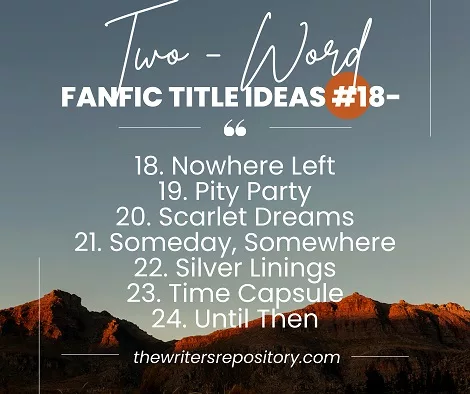
120+ Best Fanfic Title Ideas (2024)
Leave a comment cancel reply.
You must be logged in to post a comment.
Enjoy this blog? Please spread the word :)
Describing Smells
… walk in love, just as Christ also loved you and gave Himself up for us, an offering and a sacrifice to God as a fragrant aroma. Ephesians 5:2
Describing scents in a scene adds depth to writing by enabling the reader to relate.
- Citrusy – characteristic of citrus fruit in scent
- coppery – smelling of copper
- earthy – smelling like earth
- fishy – smelling like fish
- floral – smelling of flowers
- flowery – a flowery smell reminds you of flowers
- fruity – smelling like fruit
- Gamy – having the distinctive fragrance of game
- garlicky – smelling of garlic
- leathery – smells like leather
- lemony – smells like lemon
- medicinal – smells like medicine
- minty – smelling of mint
- musky – similar to musk in smell
- peachy – similar to a peach in colour, taste, or smell
- smoky – smelling of smoke
- woody – an earthy smell, smelling of wood
Airy, acrid, aromatic, astonishing, balmy, balsamic, beautiful, bubbly, celestial, cheap, clean, cool, delicate, delicious, delightful, dewy, divine, exotic, exquisite, faint, familiar, favorite, fine, floral, fresh, green, gentle, great, graceful, heady, heavenly, heavy, holy, immortal, light, lovely, mild, musky, musty, natural, overpowering, overwhelming, peculiar, pleasant, pleasing, powerful, precious, pungent, pure, putrid, rancid, rare, refreshing, rich, sickeningly sweet, soft, sparkly, spicy, spiritual, smoky, smoldering, stale, strange, strong, subtle, suffocating, toxic scent, unique, warm, wild, wispy, wonderful, zesty are all adjectives that could pertain to smell.
The air was thick with the salty, messy smell of the cow.
He had a masculine smell of moss and pine.
The sour, yeasty smell of Guinness and champagne.
Booze, soured smell.
Stale cigarette smoke
Perfume – Floral and exotic
Lavender, chemical smell of detergent
A fresh, lemony polish emanates from within
Her smell – cotton and vanilla and sandalwood
Oranges with a hint of cologne
Wood polish
The sharp small of gasoline
Acrid smell of smoke
Perfume, sickly sweet.
The room was stuffy and smelled sickly sweet.
Stale breath
The strap stink of sweat
Post navigation
Previous post.
No comments yet. Why don’t you start the discussion?
Leave a Reply
You must be logged in to post a comment.
Writing sense of smell – sensory writing 2
Sensory writing is a great way to bring your readers close, whatever your writing form – fiction, poetry, scripts or copywriting. This article suggests how writing sense of smell can help create a more vivid sense of immersion in your fictional world.
Other senses such as touch and hearing are powerful in their own ways, but the sense of smell is special. It’s thought to be the oldest mammalian sense, and hits deep into our brains.
So using smell in writing is a powerful way to stir your reader’s senses, and bring them closer.
Smell is also closely linked to memory, the sense of taste, and our enjoyment of food.
And it’s intimately connected to our breathing. Some smells can hit us so strongly that they make us choke and recoil!
Here are some ways to develop your use of smells in writing.
Smells and danger
When you’re writing sense of smell, look out for its dramatic potential. Can you use it to drive dramatic action ? Will it perhaps trigger a fight-or-flight reaction in one of your characters? Or will it lure them into seduction by the wrong person, or cause them to lose their way (or their mind!) or otherwise get into danger?
Unusual smells often have an association with danger. That’s because our our brains wiring makes us super-alert to unfamiliar sensory information. That includes smells.
So if you’re writing a thriller, fantasy, scifi or any world that’s new or unsettling to your characters, add smell to your writing repertoire.
Think of pungent smoke, the sickly-sweet smell of rotting flesh, strong chemicals that hit our throats and make our eyes water.
Note: we quickly get used to smells after some exposure. Even the most terrible smells can lose their potency after a while. And beautiful perfumes stop being noticeable after a few minutes of habituation.
So context is important. Maybe you can link the smell to a countdown situation or ticking time bomb ?
Smells that signal danger are often linked to novelty or unfamiliarity. How can you use this in your fiction scene?
Sensory writing practice :
Refresh your nose-palette, to make familiar smells unfamiliar. To do this, go into a different smell environment – outdoors in the fresh air, for example – and then return indoors. What do you notice differently? Free-write and try to capture the smells and scents you discover.
Use your nose and rediscover the familiar smells of your surroundings.
What might strike someone coming into your home or work for the first time?
Consider how familiarity and unfamiliarity with certain smells might help to define your characters. Write a paragraph about your characters’ favourite smells, and smells they dislike.
Smells and memory
Another approach to writing sense of smell is to consider the power of memory.
Smells can cause instant flashbacks, catapulting you back to a long-forgotten memory – whether a delightful one, or an awful one.
What’s more, smells that are happy or neutral for one person can be traumatic for another, if they trigger an association with unhappy memories. So they might become a reason for dramatic action – say, one character wanting to avoid a smell, or impose a smell on another.
For example, I can’t stand the smell of lilies because of a hospital stay when the ward was full of vases of flowers. Their pungent stench was all the worse because of the lack of fresh air, and hospital chemicals. So if I were ever in a room full of lilies, I’d want to open a window, fan the air or cart them away down the far end of the corridor!
But I love the smell of hot tar, which I associate with a tarred garden shed I used to play in as a child. So I might want to stop and breathe on a tarred road, fixate on roadworks, or love hot city days that others want to avoid!
However, someone with a traumatic experience in a tarry shed might feel very different.
Writing sense of smell effectively is a chance to tap into these deep-seated emotions. How can you exploit your characters’ individual reactions to smells?
Brainstorm smells from your past, and free-write on what they are and how they make you feel. Think about childhood, school, adolescence, relatives’ homes and places you’ve visited.
What emotions are associated with those smells? Write a paragraph about the smell and try to evoke the emotion without calling it by name.
Do any of them evoke a particular place, time or era? Consider how you might turn one of these triggers into a story.
Think like a perfumier or whisky taster
Perfumiers and wine, cheese, food and coffee tasters have a whole vocabulary of flavours related to their product areas. They’re usually called “notes”, and have different classifications.
The five main perfume families are floral, fresh (citrusy), oriental (warming), woody (amber, cedar, sandalwood) and fougère (meaning “fern” – lavender, bergamot).
Research olfactory words from one of these areas and gather inspiration for your work in progress. Use them to deepen the description or a character’s perceptions.
Consider the sound as well as the meaning of the words, and notice how they feel when you read them to yourself. Try “citrus”, “musk”, “caramel”. Try olfactory words in a scene involving food.
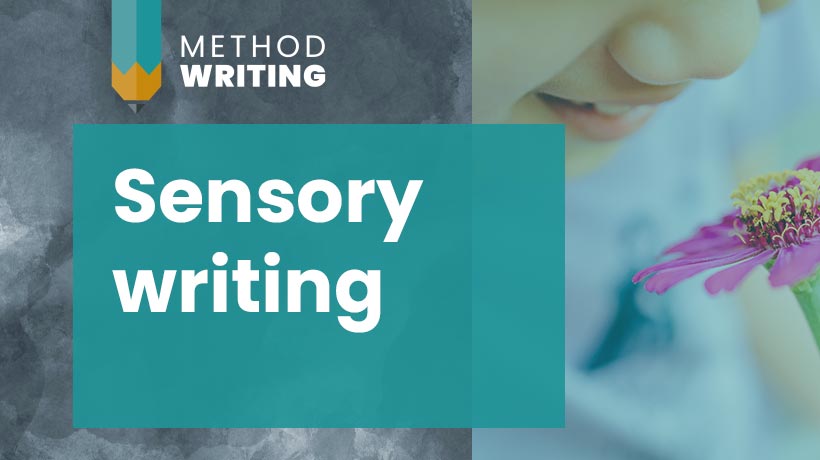
Read more articles on sensory writing: Sensory writing – sounds and music Sensory writing – the sense of smell Sensory writing – touch and texture
Smells and breathing
Smells aren’t just about notes and fragrances. Since we also breathe through our noses, smells are closely linked to feelings of comfort and discomfort. A violently pungent smell can make us hold our breath or stop breathing. It can even make us reel.
Someone once offered me smelling salts to try. I had no idea what they smelled like, but I knew that people wafted them under the noses of Victorian ladies, to help them recover from fainting. I intrepidly had a sniff, and nearly leapt in the air!
Smelling salts are ammonium carbonate – a kind of ammonia that hits the back of your throat and sears a hole in your airways. I often wonder what sort of expletives came from those Victorian women! They certainly wouldn’t come round gently.
Consider the intensity of specific smells, and their physical impact on the body and breathing.
Do they clog or dull someone’s airways? Do they heighten the senses, and make the person super-sensitive? Maybe they affect the eyes, the mouth, the throat? Or cause nausea or gagging?
If they’re attractive smells, do they entice your character, lure or draw them in? Try incorporating the physical nature of smells into a story.
Smells and viewpoint – near and far
Smells in description can help to emphasise viewpoint. Salt smells at the seaside that reach deep into the lungs convey a different viewpoint to a fleeting sense of strange perfume on your lover’s collar.
Smells can be deeply intimate and tiny, or all-embracing in the air around us. They can also appear and disappear on the wind – for example, the scent of fox or dead sheep as you’re walking in the countryside.
Think about smell and its scale in your work in progress. What are the surroundings like? Is the smell close and pinpoint focused, or all-enveloping? Is it contained in a space, or free to shift and evaporate? Does it evoke the natural or industrial world? Is it alien and new to its environment, or part of it?
Try incorporating a sense of smell into your setting, to create a more immersive experience for your readers.
Phantom and imaginative smells
Smells hit straight into the brain, and a confused brain can even manufacture smells. I used to wake up in the night plagued by nauseating smells of petrol fumes which my partner couldn’t detect at all. After much worrying and looking around for the source, I spotted a possible link to an increase in coffee drinking. I cut the coffee (terrible withdrawal headaches!) and the petrol smells miraculously disappeared.
This made me wonder about other phantom smells, and differences in perception. This petrol smell was so real, but it was all in my head.
What smells are noticed by some people and not others, and why? By animals?
What would it mean if you could smell something extraordinarily real that constricted your breathing, yet no one else could? Conversely, what would it mean to have no sense of smell?
Consider the imaginative ways that smells exist in our lives, and the moods and social situations they create. Try writing a story triggered by an unpleasant smell, or a pleasant one. Use techniques of exaggeration, transformation, inversion, scale and absence to explore your idea imaginatively.
Share with friends
Latest posts.
- Authors: do you have ‘too many writing ideas’ syndrome?
- Strategic UX writing – how to handle a website restructure
- How to prepare a non-fiction book for audio recording
- How to write a nanonovel with random writing prompts
- How to write an audio guide tour script
- Using Oblique Strategies in writing and creativity
- AI and generative writing with GPT-3
By clicking the Accept button, you agree to our privacy policy regarding cookies, tracking statistics, etc.
Manage cookies
- AI Content Shield
- AI KW Research
- AI Assistant
- SEO Optimizer
- AI KW Clustering
- Customer reviews
- The NLO Revolution
- Press Center
- Help Center
- Content Resources
- Facebook Group
The Most Creative Words to Describe Smell
Table of Contents
When depicting smell, descriptive language can help the reader have a much more vivid experience. This article explores the best ways to depict smells and has compiled a list of words associated with scents.
The nose can recognize more than one trillion different scents. The ability to smell is extremely strong. We use smells to describe things we can’t see because they can arouse memories and emotions.
What happens, though, when we want to describe a smell to someone? How do we accurately describe the scent of a wet dog?
That’s why we decided to dedicate today’s post to the most creative words to describe smell that you can use. If this sounds interesting, keep on reading until the end!
Why Is Smell Important in Story Telling?

It’s challenging to depict smells. However, if you know the right words to use, it doesn’t have to be.
A smell is produced when molecules come into contact with the receptors in our noses.
Anything can produce these molecules, including foods, beverages, flowers, plants, animals, and even people. When molecules enter our nose, they interact with receptors there. This causes neurons to send a signal to our brain.
This is how smell appears to us.
The brain’s limbic system, which manages our emotions and memory, directly connects with our sense of smell. Because of this, certain smells have the power to transport us to a past moment or location instantly. Although people frequently disregard it, the sense of smell is one of the most effective ways to trigger emotions and memories.
Although you may be tempted to say, “It smells like a rose,” that isn’t very helpful to someone unfamiliar with rose smells. Additionally, there are numerous varieties of rose scents, including musky, floral, sweet, and others.
Try to determine which category a smell belongs to when encountering one you aren’t quite sure about. Explaining it to others will give you a place to start.
After extensive research, scientists have determined ten categories. These are:
- fragrant,
- woody/resinous,
- fruity (non-citrus),
- chemical,
- minty/peppermint,
- popcorn,
- pungent,
The classification of a scent is merely the beginning. There are numerous other ways to capture your reader’s imagination.
Defining Smell in Literature
Make an effort to consider all of a smell’s characteristics when describing it . It reminds you of what, precisely? What emotions does it stir up?
If you can be more specific, it will be easier for readers to see what you are trying to say. The best way to describe a smell is not always clear-cut.
It all comes down to using sensory language to paint a clear picture in the reader’s head.
Smells have the power to arouse potent memories and emotions. We frequently smell things before we see them. A bouquet of flowers is more than nice smells. They also represent love and passion. Because they paint a clear picture in our minds, adjectives are used to characterize smells.
A smell’s characteristics can be divided into five primary flavors: sweetness, sourness, bitterness, saltiness, and umami. Even though you can’t smell them, you can feel what they taste like.
A scent’s intensity can also describe it—is it light and airy or strong and earthy?
Making your description more evocative can be accomplished by identifying the feelings and emotions that a particular scent evokes.
Best Words to Describe Smell
Below you may find some of the most popular words that we use to relay smells in writing . If you think we missed some smells, let us know!
Final Words
The smell is only one of the five senses, but it is arguably one of the most difficult to describe. Smelling is such an inane thing to do, and in our daily lives, we are subjected to many smells. Be it fresh or rotten. However, it’s difficult to relate to a third party.
Smelling something is very important for tasting it as well, as many chefs understand food is ready just by its smell. So, in a sense, it’s one and a half senses, but we digress.

Abir Ghenaiet
Abir is a data analyst and researcher. Among her interests are artificial intelligence, machine learning, and natural language processing. As a humanitarian and educator, she actively supports women in tech and promotes diversity.
Explore All Descriptive Text Articles
Effective writing tips to describe a person.
As with any piece of writing, it’s essential to paint a picture vividly and make your reader fully grasp your…
- Descriptive Text
Best Words to Describe Your Personality
There are instances when you’ll be required to describe yourself. It can be for a job interview or when introducing…
30+ Interesting Words To Describe Beauty
Beauty is the quality of being physically or visually attractive. It is the aesthetic properties of an entity, a natural…
Interesting Adjectives to Describe Movies
You might need to give a review about a movie you just watched. While you can use a few phrases…
Interesting Personality Adjectives to Describe People
What words best describe you? Funny? Determined? Hardworking? These words are adjectives. Adjectives modify one’s personality. They’re an easy and…
When depicting smell, descriptive language can help the reader have a much more vivid experience. This article explores the best…
Get the Reddit app
revamping in progress
All are welcome at r/writers: fiction writers, nonfiction writers, bloggers and more! Get critique on your work, share resources, ask questions and help fellow writers.
How to describe the smell of a drunk person?
So in my story, I want the main character to describe the smell of her drunk friend.
Now, I have never encountered a drunk person in my life much less touch alcohol. The same is with the main character.
How do you describe the smell of a drunkard when you have never even smelled one?
Log in or Sign up
You are using an out of date browser. It may not display this or other websites correctly. You should upgrade or use an alternative browser .
struggler Member
Looking for some adjectives for the smell of sweat.
Discussion in ' Word Mechanics ' started by struggler , Apr 9, 2013 .
googletag.cmd.push(function() { googletag.display('funpub_749f681dcf544662dea947f33c512698'); }); I've been doing a lot of searching on the internet trying to find this, however I haven't come up with anything but 'rank'. I'm looking for a word to describe the smell of sweat on someone that hasn't washed in a while and has accumulated in their clothing. The frustrating thing is that I'm 100% sure I've read of some good describing words for this exact thing before in novels but am coming up with blank now. I'm not looking for anything extreme, just like, you know, if you've ever done the 'smell test' and there's that smell you know its sweat. Anyone?
SwampDog Senior Member
googletag.cmd.push(function() { googletag.display('funpub_749f681dcf544662dea947f33c512698'); }); . Most readers will know what stale sweat and BO smells like, so they could use their own imaginations. Other than that, you could use a mixture of urine/cabbage/fish. But rank body odour would get the message across.
rhduke Member Reviewer
googletag.cmd.push(function() { googletag.display('funpub_749f681dcf544662dea947f33c512698'); }); I too think "rank" is enough to get the message across. You could use a metaphor along side of it to be more specific about the smell or just something like "His rank odour made me gag."
Gonki New Member
googletag.cmd.push(function() { googletag.display('funpub_749f681dcf544662dea947f33c512698'); }); caustic, acrid
erebh Banned Contributor
googletag.cmd.push(function() { googletag.display('funpub_749f681dcf544662dea947f33c512698'); }); he smelt like: a construction worker clocking off a trawlerman mid-shift that homeless guy under the bridge Smelly Smithy from 2nd grade
mammamaia nit-picker-in-chief Contributor
googletag.cmd.push(function() { googletag.display('funpub_749f681dcf544662dea947f33c512698'); }); musty musky
Anthony Martin Active Member
googletag.cmd.push(function() { googletag.display('funpub_749f681dcf544662dea947f33c512698'); }); Gonki said: ↑ caustic, acrid Click to expand...
Trish Damned if I do and damned if I don't Contributor
googletag.cmd.push(function() { googletag.display('funpub_749f681dcf544662dea947f33c512698'); }); Acrid, pungent, musky - all good. It's often described as a sweet/sour smell, but those usually make me think of Chinese food and then I'm hungry (and annoyed). Like one book (can't remember what it was) said something like "Sweetly sour smell of day old sweat.." Disgusting, but it still made me hungry, heh. I'm pretty sure that wasn't the intent, but still.
peachalulu Member Reviewer Contributor

googletag.cmd.push(function() { googletag.display('funpub_749f681dcf544662dea947f33c512698'); }); gamy, malodorous, fetor, graveolent,
Cogito Former Mod, Retired Supporter Contributor

googletag.cmd.push(function() { googletag.display('funpub_749f681dcf544662dea947f33c512698'); }); There are different kinds of sweat, too. Prolonged fear produces a sweat that is more sour, more acrid, more ammoniacal than normal sweat. Sexual arousal produces a sweat rich in pheromones, which also changes the odor, makes it muskier. Sweat from heavy exertion is also muskier, but not in the same way. Also, the person's diet can change the scent, as can gender and ethnicity. Also, sweat ages and becomes stale and rank, like sports gear stored in a gym locker for weeks. Best to capture these nuances primarily by association, rather than by straight description.
googletag.cmd.push(function() { googletag.display('funpub_749f681dcf544662dea947f33c512698'); }); Cogito said: ↑ There are different kinds of sweat, too. Prolonged fear produces a sweat that is more sour, more acrid, more ammoniacal than normal sweat. Sexual arousal produces a sweat rich in pheromones, which also changes the odor, makes it muskier. Sweat from heavy exertion is also muskier, but not in the same way. Also, the person's diet can change the scent, as can gender and ethnicity. Also, sweat ages and becomes stale and rank, like sports gear stored in a gym locker for weeks. Click to expand...
Anthelionryu New Member
googletag.cmd.push(function() { googletag.display('funpub_749f681dcf544662dea947f33c512698'); }); Putrid?
googletag.cmd.push(function() { googletag.display('funpub_749f681dcf544662dea947f33c512698'); }); in some cases, even 'sexy'!
KaTrian A foolish little beast. Contributor
googletag.cmd.push(function() { googletag.display('funpub_749f681dcf544662dea947f33c512698'); }); I probably wouldn't even use an adjective. Well, okay, this is for an extreme case, I suppose, but there was no adjective I could think of when I started BJJ and found myself in a big, sweaty dude's armpit or in the close vicinity of their crotches more often than a woman should in their lifetime. I'd show it. Gagging, holding breath, wrinkling nose, turning away, jerking their head away and crying "Je-ee-sus!" pulling a shirt over their nose, etc. Or come up with something imaginative. Like it smelled like rotten eggs with a dope habit had nested in his old gym boxers.
blackstar21595 New Member
googletag.cmd.push(function() { googletag.display('funpub_749f681dcf544662dea947f33c512698'); }); KaTrian said: ↑ I probably wouldn't even use an adjective. Well, okay, this is for an extreme case, I suppose, but there was no adjective I could think of when I started BJJ and found myself in a big, sweaty dude's armpit or in the close vicinity of their crotches more often than a woman should in their lifetime. I'd show it. Gagging, holding breath, wrinkling nose, turning away, jerking their head away and crying "Je-ee-sus!" pulling a shirt over their nose, etc. Or come up with something imaginative. Like it smelled like rotten eggs with a dope habit had nested in his old gym boxers. Click to expand...
googletag.cmd.push(function() { googletag.display('funpub_749f681dcf544662dea947f33c512698'); }); blackstar21595 said: ↑ I take Judo, and I know where Kat is coming from with this. For me, whenever I came close to a person that smelled bad(no matter the situation) I avoided them completely, breathed in fresh air from an open window, or tell them to go away. Click to expand...
Stukov New Member
googletag.cmd.push(function() { googletag.display('funpub_749f681dcf544662dea947f33c512698'); }); I think 'rancid' lends itself quite well to the stale smell of someone who hasn't washed in a while. Wonderful word.
ChaosReigns Ov The Left Hand Path Contributor

googletag.cmd.push(function() { googletag.display('funpub_749f681dcf544662dea947f33c512698'); }); KaTrian said: ↑ I wonder if it's a Finnish thing then not to care for one's personal hygiene? I mean, the only guy there who hasn't reeked like balls on a hot Arizona day is my hubbie. How do you steer clear from the horror when it's 19 dudes out of 20 who've made an art out of avoiding the shower and never seem to wash their gi? Granted, you kinda get used to it. And often have bigger problems than the smell of sweat to deal with on the tatami. Click to expand...
googletag.cmd.push(function() { googletag.display('funpub_749f681dcf544662dea947f33c512698'); }); Putrid doesn't really fit. Putrid is the small of decay, of rot. If what you smell is putrid, chances are there is more than sweat involved, such as a serious infection (necrotizing fasciitis, gangrene).
Share This Page
- Log in with Facebook
- Log in with Twitter
- Log in with Google
- No, create an account now.
- Yes, my password is:
- Forgot your password?

- Search titles only
Separate names with a comma.
- Search this thread only
- Display results as threads
Useful Searches
- Recent Posts
- This site uses cookies to help personalise content, tailor your experience and to keep you logged in if you register. By continuing to use this site, you are consenting to our use of cookies. Accept Learn More... Dismiss Notice

About Inside Science
Inside Science was an editorially independent nonprofit science news service run by the American Institute of Physics from 2010 to 2022. Inside Science produced breaking news stories, features, essays, op-eds, documentaries, animations, and news videos. Through our work, we aimed to thoroughly explore and accurately capture the search for discovery around the world -- to expose both the small corners and the broad vistas of the modern scientific landscape. Everything we wrote and produced was for the general public, and we approached this audience through a multitude of voices and perspectives. We also embraced as part of our mission the public service of addressing and correcting inaccurate or misleading information we found on the web. We invite media organizations, groups or individuals to reprint our content. Please contact [email protected] for our terms and conditions. No licensure is required for anyone wishing to link to, cite or otherwise reference Inside Science stories.
Browse the Archive

More Science News from the Federation


Sniff Test: Research Is Unraveling The Mysteries of Smell
Debunking myths about our sense of smell and uncovering the power of olfaction..
Posted June 17, 2024 | Reviewed by Devon Frye
- Animals rely heavily on the sense of smell. But what about humans?
- Research on olfactory chemical communication has been growing, and the results are fascinating.
- Contrary to myth, human pheromones have not yet been detected.
- Contrary to myth, women who reside together do not synchronize their menstrual cycles.
Many animals, mammals included, are heavily reliant on their sense of smell in dealing with the world. Yet people often assume that this is not the case with humans.
Indeed, research on how smell factors in people’s judgments, decisions, and behaviors has lagged behind research on other senses like sight, touch, and hearing. This fact is surprising given that, as German researcher Helene Loos and colleagues write , “the human body is richly endowed with apocrine and sebaceous glands that produce hundreds of chemical compounds in individually variable amounts, bestowing each individual with a unique chemical signature.”
Our understanding of smell has advanced of late. A fascinating recent article (2023) by Loos and a team of European scientists sought to summarize the growing body of work exploring the effects of smell in humans. In the process, the authors debunk several myths about olfaction.

The first myth is that the human sense of smell is underdeveloped and unimportant. Indeed, the authors cite work that has shown how human olfaction is a powerful and sensitive sense. For example, research has shown that adult partners or child peers can recognize each other solely based on their body odors; mothers can likewise identify their infants (this ability is hindered in depressed mothers). Neonate infants have been shown to orient to their mother’s breast based on smell.
Moreover, research has found that volatile emissions (molecules in the gas phase emitted from a given source that may reach a receiving organism through the air) from multiple sites of the human body “are chemically differentiable along perceptually valid social dimensions such as age, sex , individuality, and health.” In other words, we can reliably distinguish old from young, men from women, sick from healthy by smell.
Third, “although the most impactful compounds in these chemical signatures still need to be identified, they were shown to be clearly perceivable and learnable and to bear multiple meanings for receivers.”
Humans have been shown to reliably recognize their own body odors as well as those of their kin and friends. In fact, research has suggested that persons who experience a "click" feeling upon meeting “smelled more alike than expected by chance.” Similarity in body odor was also “correlated with better social interaction between strangers.”
Research using dual-EEG recording of a mother-infant (versus stranger-infant) interactions has shown that the higher inter-brain mother-infant synchrony disappeared when the mother’s odor was brought into the the stranger-infant interaction. Moreover, the typical fear response to the presence of strangers disappears with the introduction of their own mother’s odor. The mother’s odor, in other words, appears to be more essential than previously believed to the formation of healthy attachment .
In addition, contemporary research has demonstrated how olfaction is involved in human mate selection and romantic relations. Men, for example, perceive female body odors as most attractive during the fertile phase of the women's menstrual cycle. Preference for spousal odor has been shown to positively correlate with relationship duration.
The authors discuss the role of smell in the priming individuals for certain adaptive emotional responses. Individuals with high levels of social anxiety , for example, show “more pronounced withdrawal-related behavior (startle reflex) when exposed to anxiety -related sweat samples than individuals with low levels of social anxiety.” Moreover, individuals with high social anxiety and those with a history of childhood maltreatment “show an altered responsiveness to anxiety-related sweat samples.”
Human beings, in sum, are capable of subtle and substantial chemical communication via the sense of smell.
The second myth is that human " pheromones " are active in controlling human mating behavior. Pheromones are defined as “substances which are secreted to the outside by an individual and received by a second individual of the same species, in which they release a specific reaction, for example, a definite behavior or a developmental process.” Pheromones have been identified in many species, and the search for the human version has been intense, buoyed in part by studies of so-called menstrual synchrony: the reported tendency of the menstrual cycles to synchronize in groups of women who reside together. Such synchronicity was thought to have been caused by pheromones.
Alas, while widely circulated, this notion is inaccurate. In fact, multiple studies have tried and failed to replicate the synchronicity effect. And the effect, when found, is often explained best by simple chance, given the inherent overlap in women’s cycles.
The search for human pheromones beyond this famous finding has likewise come to naught. The authors conclude: “The quest for a human pheromone still remains unfulfilled. No compound(s) in the human volatilome has yet been isolated and ascertained to unconditionally and reliably release stereotyped behaviors or to prime physiological responses.”

In sum, research has established that the human sense of smell is in fact highly developed. We know that one’s emitted airborne volatile compounds are readily detected and processed by others to myriad conscious and covert effects.
The authors conclude: “Smell is a potent influence on multiple life domains, including cooperation , mate choice, parenting , and emotional state.” They note that individual reactions to volatiles is shaped by multiple internal and external variables including personality , mental state, social context, expectations, and evolutionary preparedness. They further note that olfactory reactions are integrated with the other senses and may at times confirm, contradict, overrule—or be overruled by—inputs from the other senses.
Finally, volatiles are “processed in social and emotional brain areas rather than purely olfactory brain areas, carefully sculpted over the course of evolution but still malleable to present-day psychological factors.” In other words, as with our other senses, biology designs the hardware, yet psychology programs the software.
The challenges ahead for the field are considerable. For one, sorting through the multiple scents emitted by humans in varying degrees and combinations, and relating them to specific behavioral or bodily reactions is a daunting task. Moreover, the work on olfaction will need to remain sensitive to the influence of context and avoid rushing to generalize from small samples to the whole and from one culture to the next.
“Nevertheless,” write the authors, “major breakthroughs may be forthcoming because of the increasing availability of advanced techniques that enable the measurement of dynamic changes in volatiles and the identification of active compounds in normally behaving individuals.” The authors conjecture that the principles of chemical communication could, in the future, be used to “regulate individual emotional states, such as reducing anxiety and depression by specific olfactory safety cues.”
Aromatherapy, in other words, may at last become a real, empirically based therapy .

Noam Shpancer, Ph.D., is a professor of psychology at Otterbein University and a practicing clinical psychologist in Columbus, Ohio.
- Find a Therapist
- Find a Treatment Center
- Find a Psychiatrist
- Find a Support Group
- Find Online Therapy
- United States
- Brooklyn, NY
- Chicago, IL
- Houston, TX
- Los Angeles, CA
- New York, NY
- Portland, OR
- San Diego, CA
- San Francisco, CA
- Seattle, WA
- Washington, DC
- Asperger's
- Bipolar Disorder
- Chronic Pain
- Eating Disorders
- Passive Aggression
- Personality
- Goal Setting
- Positive Psychology
- Stopping Smoking
- Low Sexual Desire
- Relationships
- Child Development
- Self Tests NEW
- Therapy Center
- Diagnosis Dictionary
- Types of Therapy

At any moment, someone’s aggravating behavior or our own bad luck can set us off on an emotional spiral that threatens to derail our entire day. Here’s how we can face our triggers with less reactivity so that we can get on with our lives.
- Emotional Intelligence
- Gaslighting
- Affective Forecasting
- Neuroscience

IMAGES
VIDEO
COMMENTS
The human sense of smell is intimately connected with memory, which makes it a useful tool for writers. Scent is an incredibly evocative detail to explore in creative writing, but too often writers neglect the possibilities that scent descriptions open up in terms of establishing setting and emotion in their work. The human sense of smell is ...
The art of describing smells in writing can elevate your work to an immersive experience for readers. The human sense of smell is closely linked to memory, making it a powerful tool for writers to evoke emotions and transport readers into the world they've created. Capturing the essence of a scent in words can be challenging, but with a ...
aromatic - perfumed, fragrant, scented, sweet smelling, pungent, usually pleasing. bouquet - the particular smell of a wine or flower. delicious - a pleasant smell. fresh - a pleasant, newly made smell that can be clean, clear, cool, crisp, refreshing, sweet, warm. fragrant - with a pleasant smell.
Qualities of a smell can be broken down into the five cardinal tastes: sweetness, sourness, bitterness, saltiness, and umami. You can't exactly smell these, but you can experience the sensation of these tastes. This is how you might describe these smells when writing: Sweet: sugary, saccharine, sickly. Sour: balsamic, tart, acidic.
01 Buttered. Buttered is a good word to use, because foods such as popcorn, shrimp, and chicken drenched in butter tend to have that unmistakable buttery smell. It is good to use as butter is a very common ingredient and its odor is known by everyone so it'll be easy to portray this smell. E.g.
It is, in fact, believed that there is more than touch, taste, sound, sight, smell. These golden 5 were defined by Aristotle because he could relate them to sensory organs. They are sometimes known as the "five senses folk model". But it depends on the manner in which you define a sense.
To describe a smell, you can choose to stay in the present or you can go back in time. Like music, aromas can evoke strong memories. The art of describing a smell. As we've seen there are at least 3 techniques for describing a smell. First, you can use sensory language to describe the different layers of an aroma, and how it changes over time.
Use scent to your advantage. Spritz aroma throughout your writing, as you might air freshener in a stale room, to stimulate readers' olfactory centers. Alternative Nouns for Scent. The word aroma conveys an impression of something pleasant, whereas smell could refer to unpleasant scents. Choose carefully.
The following quotes are from writers who use the sense of smell effectively. "The smell of a grow room is the scent of transpiration, of fecund exertion. It's the trapped sweat of a high school locker room, the funk of a hockey jersey steaming on a radiator.". Bruce Barcott, Weed the People.
There's the smell of sea-spray, cow manure, urine, fresh-cut grass, corn tassels at harvest time. Cinnamon to curry. Blood to berries. Ashes and woodsmoke to iron and dust. A trillion smells are ...
5. Use adjectives. Adjectives can describe the general, overall quality of the smell. Wispy, rancid, airy, musty, stale, fresh, putrid, faint, light, floral, and acrid are all adjectives that could pertain to smell. [4] Smell origins may take the form of a noun (the smell of leather) or an adjective (a leathery smell).
Sickly roses. Writers, don't always describe the smell of something in a predictable way. If your character likes the smell of a disgusting thing, or hates the smell of something lovely, that goes a long way in surprising your reader and building this character. 6. Describe Place Through Scents.
Here are some words that can describe that deep yet pleasant scents of nature: - Ambrosial: succulently fragrant or sweet. - Earthy: the smell of freshly dug soil. - Damp moss: the forest aroma after being steeped in the rain all day long. - Floral: richly sweet, flowery scents. - Myrrhic: a pleasant myrrh fragrance.
Ephesians 5:2. Describing scents in a scene adds depth to writing by enabling the reader to relate. Citrusy - characteristic of citrus fruit in scent. coppery - smelling of copper. earthy - smelling like earth. fishy - smelling like fish. floral - smelling of flowers. flowery - a flowery smell reminds you of flowers. fruity ...
Sensory Imagery in Creative Writing: Types, Examples, and Writing Tips. Sensory imagery is a literary device writers employ to engage a reader's mind on multiple levels. Sensory imagery explores the five human senses: sight, sound, taste, touch, and smell.
Sensory writing practice: Research olfactory words from one of these areas and gather inspiration for your work in progress. Use them to deepen the description or a character's perceptions. Consider the sound as well as the meaning of the words, and notice how they feel when you read them to yourself. Try "citrus", "musk", "caramel".
Let imagination run wild with these smell adjectives. Ensure your reader can vividly imagine the scents you're describing with these adjectives for smell.
Photo by Sébastien Jermer on Unsplash. Once the giggles subsided, I got some serious answers. "Saltwater." "Salt." "It smells tangy." "Salty.". Okay, so they are only Year 7s, but even as adults we have a tendency to fall back on the same descriptions. But writing about "the salty tang of the air" is pretty generic, and ...
A smell is produced when molecules come into contact with the receptors in our noses. Anything can produce these molecules, including foods, beverages, flowers, plants, animals, and even people. When molecules enter our nose, they interact with receptors there. This causes neurons to send a signal to our brain. This is how smell appears to us.
I don't think people start to smell bad until they're at least twelve. So I've still got a few months to go." 10. Nina McLaughlin, Hammerhead: The Making of a Carpenter "Sawdust spewed and dusted down onto the pavement, resting in craters in the cement, and the smell of pine moved with it, bright and clean, the smell of ...
In the meantime, here are some tips for describing smell: Start with a bedrock of adjectives. Use specific initial descriptions to convey smells in relatable terms. Examples include: spicy, musty, citrusy, floral, earthy. You should build from these initial basic descriptions. Utilize metaphors and similes.
Mention the smell of what they're drinking. He smelled whisky on her breath etc. The reader will most probably know what they smells like. If you want adjectives, some high alcohol things smell sour, stone sweet things like liqueur or stale beer smell sickly. Some alcoholics smell positively acrid.
Creative Writing Forums - Writing Help, Writing Workshops, & Writing Community. Home Forums > The Writing Process > Word Mechanics > Previous Thread Next Thread. ... I'm looking for a word to describe the smell of sweat on someone that hasn't washed in a while and has accumulated in their clothing. The frustrating thing is that I'm 100% sure I ...
Inside Science was an editorially independent nonprofit science news service run by the American Institute of Physics from 2010 to 2022. Inside Science produced breaking news stories, features, essays, op-eds, documentaries, animations, and news videos.
Many animals, mammals included, are heavily reliant on their sense of smell in dealing with the world. Yet people often assume that this is not the case with humans. Indeed, research on how smell ...